Book Reviews (2017) by Joseph M. Sherlock
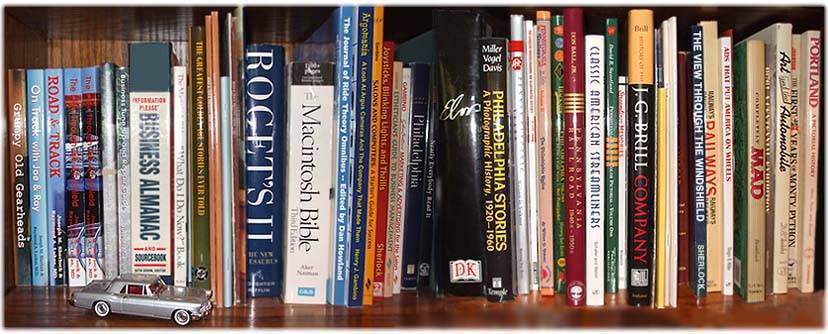
'Thank You For Being Late: An Optimist's Guide to Thriving in the Age of Accelerations' by Thomas L. Friedman
The author is a three-time Pulitzer Prize recipient and, over the years, he has pumped out a lot of columns and some books. At his best, Tom Freidman, is a great storyteller, particularly when it comes to explaining the tsunami of emerging technology in everyday terms and providing concrete examples of how these changes affect the lives of individuals throughout the world.
The first 40% or so of this 461-page book makes for an awesome read. Tom does a spectacular job showing how the fast rate of technology growth is outpacing the ability of humans to adapt it, what that mean to typical workers and how to fix the problem. Our world is being reshaped by accelerating technology but Friedman is optimistic about the outcome.
The book contains an insightful quote from Tom Goodwin: "Uber, the world's largest taxi company, owns no vehicles. Facebook, the world's most popular media owner, creates no content. Alibaba, the most valuable retailer, has no inventory. And Airbnb, the world's largest accommodation provider, owns no real estate. Something interesting is happening." That certainly made me think. Businesses with no physical assets successfully operating in a world of asset-heavy competition: "Toto, I've a feeling we're not in Kansas anymore."
You'll find a plethora of interesting little facts in this book. One memorable (for me) example: The average UPS driver makes 120 delivery stops every day.
But then Friedman wanders off into global warming, how Mother Nature feels about things and other tales that highlight his progressive bias and dislike of President Trump. Author/reporter Matt Taibbi is neither conservative nor Trump-friendly but he wrote that Friedman's "'Wall people' in his mind are either xenophobic Trumpets who don't want a flood of dirty, rape immigrants entering their towns, or they're Sanders socialists who don't want to compete with foreign workers and insist on government handouts." Taibbi added, "In his new book, 'Thank You for Being Late,' Thomas Friedman makes a short story long ... Thomas Friedman needs 461 pages to say, 'Shit happens.'"
At the end of the book, Friedman takes readers on his journey to a small suburb in Minnesota, where he grew up. His lengthy nostalgia tour seemed to be added to the end of the book just because Tom wanted to relive the good/bad old days. It was a letdown and did nothing to enhance his central message.
Friedman is a liberal technocrat and is less than tolerant about viewpoints that don't match his own, especially climate change. He has a bias for solar and wind power and wants more taxes. In the 2016 election, he voted for Bernie Sanders. An earlier book, 'That Used to Be Us: How America Fell Behind in the World It Invented and How We Can Come Back', which I reviewed, was also a flawed work which also contained some admirable notions.
Verdict: Friedman's progressive bias overwhelms a book which begins with promise. Read the first 40% and then stop. (posted 12/27/17, permalink)
'Fifty Inventions That Shaped The Modern Economy' by Tim Harford
This 280-page book contains short chapters - one about each of Harford's selected inventions. His choices are admittedly arbitrary and subject to debate. Some chapters are interesting and insightful - others dull and boring. I found parts of the book to be a slow read. Harford failed to tie things up at the end; therefore, the overall narrative is an untidy package. I liked the author's earlier work, 'The Undercover Economist Strikes Back', better.
Verdict: Not bad but you may find yourself skipping chapters. (posted 12/20/17, permalink)
'Bourgeois Equality: How Ideas, Not Capital or Institutions, Enriched the World' by Deirdre Nansen McCloskey
In this concluding volume of her economic trilogy, the author posits that the decline in extreme poverty began with the virtuousness of middle-class ideas, mostly classical liberal ones. Deirdre McCloskey is an emerita distinguished professor of economics and of history, and professor of English and of communications at the University of Illinois at Chicago. Given her credentials, you'd think that a professor of English and communications could write far more clearly and concisely. "But nooooooo," as John Belushi used to say. You'd also think that a professor of economics and history would stick to believable, proven explanations for the reduction of poverty and spread (redistribution) of wealth. Paging Mr. Belushi ... again.
This is a thick, 650-page book (plus another 150 pages of notes and index). It is heavy reading not only because of the denseness of writing but the small, eye-straining type. This tome seems even physically heavier than it is because it is ponderous, boring and unreadable.
Boiling down the central thesis of the book, it seems to be: Ethics = Prosperity. The author decided to wander into literary analysis of the period, opera discussion, ancient history, selected political theory and myriad citations from others. 'Selected' is the operative word here. The author chose only the information and stories which conformed to her 'liberalism and ethics made us all richer' message.
From 1800 onwards - the period covered in this volume - it is clear that the inventiveness of the Industrial Revolution, combined with the cleverness of those who cold develop inventions into a salable item caused wealth to be redistributed and freed serfs from dull, confined lives. The steam engine provided power for factories which could mass produce goods at prices affordable to many consumers. The steam locomotive brought products to new markets inexpensively. Life on the prairie improved greatly because great ideas were monetized.
Train travel became affordable for many, allowing them to resettle in better climates. Steam ships plied the Atlantic, bringing the talented but dissatisfied, disaffected and/or persecuted to new lands in North America. Powered tractors and modern chemistry improved productivity of farms. And the extra money was used to elevate a farm family's living standard with items purchased through the Sears & Roebuck catalog.
Then came electric lights, Model T Fords, refrigerators, automatic washing machines, radio, television - these mass-produced, life-changing products all came about because inventions were fitted to a marketing plan by clever people who wanted to make a difference. And make lots of money. Liberalism and ethics had nothing to do with it. Capitalism has much to do with it.
The premise of this book and its overbearingly erudite contents did not ring true to me. It is at variance with everything I've learned about business history.
Verdict: Don't bother. (posted 12/14/17, permalink)
'Option B: Facing Adversity, Building Resilience, and Finding Joy' by Sheryl Sandberg with Adam Grant
The author became well-known because of her 2013 bestseller 'Lean In', which is about workplace empowerment for women. I never read it. Sandberg's most recent offering is, according to the jacket blurb, about building resilience and moving forward after a major setback. In reality, the book is more of a memoir/journal detailing her feelings and experiences following the unexpected death of her husband from an undiagnosed heart condition.

Sheryl Sandberg, COO of Facebook, is quite wealthy and her husband, a Google executive, was prosperous as well. His sudden death was a devastating personal loss for Sheryl and her two children, but they had a support group of affluent friends and relatives who could fly to her side at the drop of a hat. For example, her mother slept next to her in her bed each night for a month. Then her sister-in-law took over. Because Sheryl was a key executive, she was given as much time off as needed by her boss, Mark Zuckerberg. And, she had the financial resources to avail herself of pricey counselors.
F. Scott Fitzgerald once wrote, "Let me tell you about the very rich. They are different from you and me. They possess and enjoy early, and it does something to them, makes them soft, where we are hard, cynical where we are trustful, in a way that, unless you were born rich, it is very difficult to understand."
That's one of the major problems with this book. The average person has to grieve on a budget. Sheryl whines - she does that a lot - that only 60% of private sector workers get paid time off and usually just a few days after a personal tragedy. Why, there ought to be a law! She wants a mandate for all employers to provide paid grieving time - a limousine-liberal idea which the typical small business owner cannot afford. Although Facebook and Google certainly can. From her lofty perch in the upper branches of the trendy corporate tree, Sandberg can squawk the liberal mantras without concern for the real-world root people living down on the ground.
The book is full of political mini-screeds about the unfairness of companies, governments and society in general, although the writer offered no practical solutions. I guess I wasn't surprised when I visited Amazon's page for this book and it suggesting that I pair 'Option B' with Hillary's 'What Happened' as a combo purchase. Nuff said.
This book is not a how-to publication; it doesn't offer any six-step solutions - just some general platitudes better expressed in forty year-old self-help books, such as M. Scott Peck's 'The Road Less Traveled'. 'Option B' is more about how Sheryl Sandberg processed her grief and, in my opinion, she did so far less well than people I've encountered in real life. She acted like an self-indulgent, emotional infant at times and the book is filled with lots of name dropping and continual references to her life as a woman of privilege.
Lastly, I wondered how can a book, which - when you don't count the notes and index pages - is only 183 pages long, be so boring and repetitive. Ultimately, this little tome is an epic fail - it never delivered on its promise to help those facing adversity, to suggest ways of building resilience, or to find joy, or at least, come to terms with loss.
Verdict: Useless and self-absorbed. Skip it. (posted 12/6/17, permalink)
'The Swamp: Washington's Murky Pool of Corruption and Cronyism and How Trump Can Drain It' by Eric Bolling
The author's easy-to-read, 240 page book provides a history in political corruption in Washington, D.C., a city built on reclaimed swamp land. Bolling provides a litany of backroom deals, corruption, bribery and other criminal acts committed by politicians who put their own interests ahead of their constituents.
Eric is hopeful that President Donald J. Trump is an outsider who can change things. I hope he can, too. Bolling provides some practical, tough recommendations which will force Washington to be more honest and transparent and eliminate fraud and waste.
Only time will tell if President Trump will Drain the Swamp.
Verdict: Recommended. If you enjoyed the author's earlier book, 'Wake Up America: The Nine Virtues That Made Our Nation Great - And Why We Need Them More Than Ever', you'll enjoy this one too. (posted 11/30/17, permalink)
'Origin' by Dan Brown
Recently, James Lileks reviewed the latest Dan Brown novel, which he described as "a study in modern pretentious pop-lit."
Brown's novels are well-known for their Evil-Catholic-Dark-Vatican-Secret memes. I've previously read a couple of them and they were interesting and made for compelling fiction. 'Origin' was a slog. Lileks agreed: "Certainly can't blame the guy for keeping the series going. But the writing is boring, and either the author knows it - which is bad - or he doesn't, which is bad.
He's also a coward. The interminable list of sins of religion begins, of course, with the clampdown on knowledge in the Islamic world, but then ends up in the modern world where Christian religion is thwarting progress."
James' summary: "Eh." Me, too. I had just finished 'Origin' the day James posted his review. Novels of this genre require a suspension of disbelief. This one was neither convincing nor entertaining.
Verdict: Don't bother. (posted 11/28/17, permalink)
'Big Money Thinks Small: Biases, Blind Spots, and Smarter Investing' by Joel Tillinghast
I enjoyed this easy to read, 300-or-so page book. The author provides a set of simple, credible steps to successful investing, peppered with tales of real-life stories of stocks which turned out badly. And why.
Tillinghast believes that patience, careful prepurchase investigation/analysis and methodical planning will pay much greater returns than flashy investments. Early in the book, the author states, "I have run the Fidelity Low-Priced Stock Fund with an intrinsic value approach since 1989, and it has outperformed both the Russell 2000 and Standard & Poor's 500 indexes by four percentage points per year." Later, he admits that his fund outperforms bogies best in down markets and poorest during big bull runs.
True dat. Over every period in the past five years (one month, year-to-date, one-year, three years and five years), the Fidelity Low-Priced Stock Fund has trailed the S&P 500 Index. Even over a 10-year period, it barely outperformed the index. So keep that in mind - nobody's right all the time.
I've often said that if you learn one new thing from a book, you've not wasted your time reading it. Over the past couple of years, I've had various advisers and mutual fund reps suggest that I should have more "exposure to international funds." Actually, anytime you invest in large cap mutual funds, such as the Vanguard Index 500 Fund, you're always buying shares of companies with multinational exposure (IBM, Apple, 3M, Caterpillar, Dow, Merck & Co., etc.). Over the past five years, Vanguard's Index 500 Fund has returned 14%/year compared with a tepid 6%/yr. for the firm's International Growth Fund.
In any case Mr. Tillinghast has kindly provided a reassuring bar graph, showing that, for the most part, U.S. stocks have provided the best returns for the past 115 years:
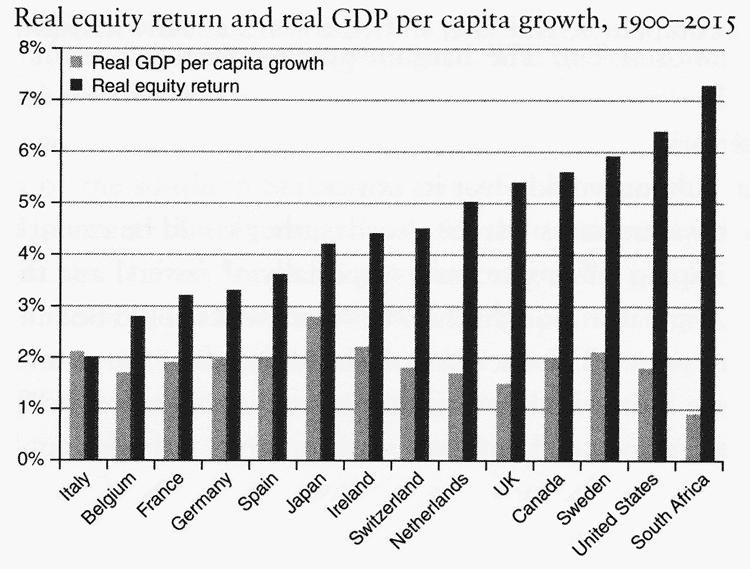
Verdict: Recommended - an informative book written in plain English. (posted 11/24/17, permalink)
'Dangerous' by Milo Yiannopoulos
Milo Y. is an outspoken political commentator, media personality, blogger and journalist. He is unabashedly gay and an avid supporter of President Trump, to whom he refers as 'Daddy', because he "oozes control and authority." Milo also describes Trump as "a fabulously camp cultural figure" and writes that many gays secretly admire the commander-in-chief: "He's the drag queen president!" Milo calls himself a cultural libertarian and says outrageous things. I watched Milo interviewed by Bill Maher and was impressed and entertained.
His 250-or-so page book was canceled by Simon & Schuster, so Milo self-published. And now, he's suing S&S. Good for him.
I enjoyed reading about his tour bus, Anita the Fag Bus, which Milo claims has "two-dozen dethorned white roses, fifty doves, four topless Abercrombie and Fitch models, a snow cone machine and horse-oil hand lotion" onboard. His many political opinions expressed in the book are well-written and compelling. He expresses his disdain for the Left in hysterically funny ways, skewering their sacred political and celebrity cows with proper sharp-pointed dispatch. He cleverly deconstructs identity politics with numerous absurd anecdotes. Milo also pokes fun at establishment Republicans, labeling them as DCCs (Debate Club Conservatives). He quotes Thomas Sowell: "Right after liberal Democrats, the most dangerous politicians are country club Republicans."
Unfortunately, I was less impressed by 'Dangerous'. Yes, it is humorous - in spots. Milo comes off as self-centered, arrogant and grandiose - there's a overwhelming amount of Me! Me! Me! in this tome. Unfortunately, 'Dangerous' was too-often boring - surprising since Milo draws large audiences at his on-campus lectures and is described as an exciting and compelling speaker.
Verdict: Disappointing. Needed to be more interesting and fabulous. And dangerous. (posted 11/20/17, permalink)
'Sons And Soldiers: The Untold Story of the Jews Who Escaped the Nazis and Returned with the U.S. Army to Fight Hitler' by Bruce Henderson
This little-known, true tale may be the last great story about World War II. Nearly 2,000 German-born Jews - most of whom fled Nazi Germany in the 1930s and came of age in America, joined the U.S. Army. They attended a special training school, where they learned intelligence and interrogation skills. Then, at great personal risk, these men joined major combat units in Europe, where they interrogated German POWs, extracting crucial intelligence that helped win the war in Europe. Over 60% of the credible intelligence gathered in Europe came from these soldiers, dubbed the Ritchie Boys - named after the school they attended at Fort Ritchie in Maryland.
The book contains a prophetic Adolf Hitler quote from 1933, when the Nazis came into power: "Give me ten years, and you won't recognize Germany." True dat. He ruined an entire country, executing many good-hearted, talented citizens who did not fit his Aryan ideal. The Ritchie Boys hated the Nazis, especially Hitler. Many, if not most of their family members died in concentration camps. Yet, these soldiers kept their hatred hidden and carried out their assignments in a most professional manner.
Bruce Henderson's 448-page narrative is full of heartbreaking stories of families separated, of parents choosing to send their young sons to unknowable futures in America. There are tales of extraordinary heroism and courage within the pages. This is a book you will not put down. Full of detail, it rarely bogs down and makes for an astonishing read.
Verdict: Highly recommended. (posted 11/17/17, permalink)
'The Age Of Daredevils' by Michael Clarkson
This book is about various attempts to go over Niagara Falls in a barrel. Sounds like a stupid idea. I thought so, when my parents took me to Niagara Falls in June 1949. Even my five year-old brain was able to process this and put it in my then-small bad idea file. After seeing the Falls up close while getting sprayed with water on the Maid of the Mist boat ride, then becoming thoroughly drenched beneath the Falls as part of the Cave of the Winds Tour (wearing ill-fitting, tour-issued flimsy sandals and a big yellow rubber slicker), after descending many flights of steps and scary walkways and, finally, after visiting a cheesy (even to my young eyes) little museum where Actual Barrels, vintage photos and unrelated oddities were on display, I was left with neither desire nor dream of falling 175 feet from Niagara's peak to turbulent, dangerous waters below in any kind of contraption.
Indeed, going over Niagara Falls is dumb and deadly. Most early attempts resulted in death and no one who succeeded and lived to tell the tale ever got rich. Quite the opposite; most died broke - or nearly so - and in obscurity. If you're going get in the daredevil biz, be more like the Wallendas or Evel Knievel: Hire a good PR firm ... and get up-front and back-end money from sponsors.
This book is mostly about Red Hill and his descendants, who worked on or near the Niagara River holding down menial jobs while doing daredevil stunts on the side. The book is so full of tedious and dreary details that it seems twice as long as its 230-or-so pages. And it contains not a single photograph; the reader is left to wonder what the people and their contraptions looked like. Instead, we are treated to long-winded details about the personal, romantic and financial travails of the major characters in the book. As well as their sad, petty rivalries. You won't find inspiring stories in this pathetic tome.
Verdict: Skip it - too little daredevil and too much boredom. (posted 11/13/17, permalink)
'Machine Platform Crowd: Harnessing Our Digital Future' by Andrew McAfee and Erik Brynjolfsson
The late, great Arthur C. Clarke famously observed, "Any sufficiently advanced technology is indistinguishable from magic." As a 74 year-old geezer, that's how I feel about today's tech-fueled world. Around the turn of the 21st Century, I was considered reasonably tech savvy by my business peers. Today, I feel lost.
The authors seem to appreciate my dilemma, writing, "Within one generation, several long-standing industries were transformed permanently and deeply by a single computer network. The business world has rarely, if ever, seen disruption at this speed and scale before."
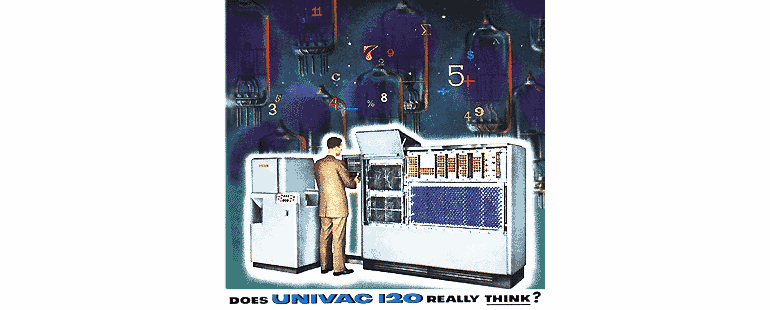
I agree. My first post-college job was in 1965. I knew Fortran which amazed my older engineer colleagues, although our manufacturing plant had not a single computer. (The plant did however make timing belts for IBM card readers; the belts allowed punch cards to be conveyed precisely through electronic card readers.) At my work desk, my sole 'device' was a black dial telephone. I used my own Post Versalog slide rule for calculations. All data sheets (machine settings, rubber compound recipes, etc.) were kept in three-ring binders on shelves throughout the engineering office. There was only one typewriter in the department - an IBM Selectric used by the Department Head's secretary. Need something typed? Get in line. There was one Xerox copier in the complex, located in the sales department. Everyone else used carbon paper or made Ozalid copies and dealt with the ammonia fumes from the Ozalid machine. (Anyone under age 55 will have no idea what I just wrote about in this paragraph.) Business life in 1965 probably wasn't all that different than it was in 1925.
Today, there's disruption everywhere, even in mature, traditionally 'safe' markets. Catherine Keating, CEO of Commonfund noted, "Don't count too much on your plan. The world just moves too fast today. It took Hilton Hotels almost 100 years to acquire 800,000 hotel rooms. Airbnb acquired a million rooms in just six years. How do you plan for that? You can't. Don't even try." (This quotation didn't come from the book.)
The authors posit that, in today's wondrous age, we must rethink how things get done: the integration of human minds with machines (especially AI), of products and digital platforms (which now drive the selection, production and distribution of products and services online), of big data and of crowd-sharing.
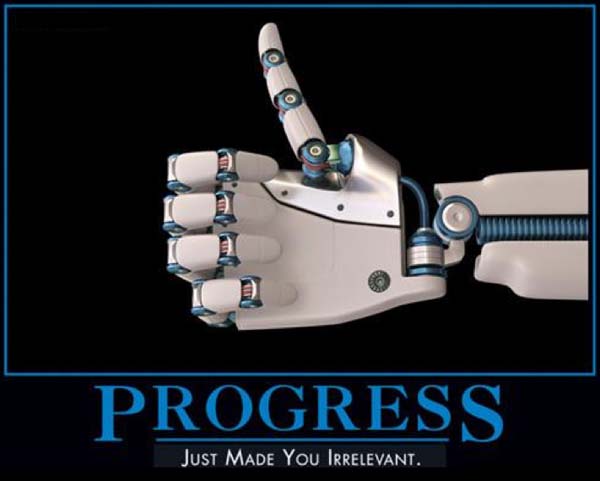
This is an interesting 400-plus page book which offers lots of examples to help explain the above concepts. Nevertheless, I'm still trying to wrap my old brain around the workings of Bitcoin and blockchain technology. This is a dense read - almost every page is full of information and analytical insights. The authors manage to put most everything they espouse into understandable context.
Verdict: Definitely recommended. (posted 11/9/17, permalink)
'American Kingpin: The Epic Hunt for the Criminal Mastermind Behind the Silk Road' by Nick Bilton
Every time we find ourselves frustrated by the actions (or inactions) of some government bureaucrat, we suddenly want to become libertarians. But, taken to extremes, libertarianism can create chaos. Such is the case with 26 year-old, self-proclaimed libertarian programmer Ross Ulbricht. When the dark side of libertarianism met the dark web, Ulbricht's creation, the Silk Road website, was born. Silk Road began as a clandestine site to sell illegal drugs, using Bitcoin as payment medium to make such transactions untraceable. Then the site moved on to trading in human organs, guns, explosives, forged documents and other things you won't find on Amazon.
The book tells the story of the federal government's two-year quest to find, arrest and prosecute the owner and operators of Silk Road. Secrecy, divergent objectives and inter-agency fighting slowed things down.
For a guy running a $1.2 billion enterprise, Ross Ulbricht lived a nomadic, almost impoverished existence. He lead an monastic life, spending most of his waking hours running Silk Road because he was afraid to delegate, lest an employee rat him out. This is in great contrast to organized criminals of yore (drug lords, mafia bosses, etc.) who risked big and lived large. The mob kept high-priced restaurants in businesses. Ulbricht subsisted on takeout and cheap diner food.
This 320+ page book takes the reader into the world of 21st Century high-tech crime. It was fascinating to observe Ulbricht rationalize to his on-off girlfriend about his increasing criminal and, eventually, murderous behavior.
Verdict: Recommended. Bilton's book bogs down in spots but is, nevertheless, a very readable true-crime story. (posted 11/1/17, permalink)
'Never Call Me A Hero: A Legendary American Dive-Bomber Pilot Remembers the Battle of Midway' by N. Jack 'Dusty' Kleiss (with Timothy & Laura Orr)
Over the past 12 months, I've read several books about World War II, including 'The Jersey Brothers: A Missing Naval Officer in the Pacific and His Family's Quest to Bring Him Home', 'Panic On The Pacific: How America Prepared for the West Coast Invasion', 'Flags Of Our Fathers', 'Killing The Rising Sun: How America Vanquished World War II Japan', 'MacArthur At War: World War II in the Pacific', 'Pearl Harbor: From Infamy to Greatness' and '1941: Fighting the Shadow War - A Divided America in a World at War'.
'Never Call Me A Hero' is one of the best of the bunch. 'Dusty' Kleiss was the last surviving dive-bomber pilot to have fought at Midway. He died at age 100, just before this book was published. Mr. Kleiss received numerous commendations during World War II, including the Navy Cross. The title of the book comes from his sincere belief that the war had many heros especially the ones who died in service to America. While he had help from his co-authors, the Orrs, the book reads like Dusty's voice, in fact, readers will feel that they're sitting across the table from him as he converses. Using his journals and diaries, he spent 10 years compiling this book, making sure that it was as accurate as possible. He tells it like it was - warts and all. He doesn't mind naming the brave as well as the foolish.
The 300+ page book provides a riveting eyewitness account of the Battle of Midway as well as other battles in the Pacific Theater. There's never a dull moment in the book and the mixture of naval stories and personal stories, including the struggle to romance the woman who would eventually become his wife, keeps thing interesting. Kleiss performed many heroic acts during his time in the Pacific, capped by his 20,000 foot dive over Midway atoll. He plummeted at 240 knots under heavy enemy fire and successfully bombed the Japanese aircraft carrier Kaga, causing it to erupt into an inferno.
Like so many who fought in the war, Kleiss was an ordinary man who did extraordinary things and, when war duties were completed, returned to a normal life as a family man. Dusty comes across as a humble, God-fearing man who had a full life well-lived.
Verdict: Highly recommended. (posted 10/26/17, permalink)
'A Generation of Sociopaths: How the Baby Boomers Betrayed America' by Bruce Cannon Gibney
The jacket blurb claims that the author "shows how America was hijacked by the Boomers, a generation whose reckless self-indulgence degraded the foundations of American prosperity."
This 450-plus page angry and sarcastic rant is pure garbage. The author manipulates facts and misinterprets data to "support" his narrative. He wrote, "The Boomers have set a time bomb for the 2030s, when damage to Social Security, public finances and the environment will become catastrophic and possibly irreversible - and when, not coincidentally, Boomers will be dying off."
It is universally agreed that the Baby Boom generation began with those poswar children born in 1946. Except for author Bruce Cannon Gibney, who arbitrarily sets 1940 as the birth year of the first Boomer, so that he can wrongly blame Newt Gingrich (b-1943), Dennis Hastert (b-1942), Art Laffer (b-1940), Rudy Giuliani (b-1944), Bill Bennett (b-1943) and others for What's Gone Wrong. This kind of factual misrepresentation is one example of Gibney's stacking the deck against what he terms "a generational plague of locusts."

The author claims to be a free-market capitalist but believes in higher taxes and more government regulations. Well, he's in the venture capital biz, so what do you expect? Another limousine liberal. He blames Boomers for global warming, something which has been proved not to exist. Except in the mind of Boomer Al Gore.
Gibney faults Boomers for the Social Security mess. Baloney. Look, I paid into Social Security my entire working life, starting when I was 15 years old. Social Security is a promised annuity, which is greatly underfunded. But it has been money-starved, in crisis, and going broke since the early 1970s, well before Boomers gained political power. Back then people were told "start saving for your own retirement; don't count on Social Security." I was pleasantly surprised when I got my first SS payment. And amazingly, the money still shows up every month.
The author also claims that Boomers' brains were rotted from watching television. He mentions 'Leave It To Beaver' as one of the culprits. Yes, well, people in the 1930s claimed that comic books were the root of all evil and were corrupting American youth. And yet, those corrupted young-uns grew up and fought valiantly in World War II. And Korea.
It's always something. Don't forget Professor Harold Hill's warning in 'The Music Man' (set in 1912 Iowa): "You got Trouble with a capital T. And that rhymes with P and that stands for Pool! .... Watch for the tell-tale sign of corruption! The moment your son leaves the house, Does he rebuckle his knickerbockers below the knee? Is there a nicotine stain on his index finger? A dime novel hidden in the corn crib? Is he starting to memorize jokes from 'Captain Billy's Whiz Bang'?" But most of the teenagers of 1912 turned out just fine, including Alfred Hitchcock, Fred Astaire, Duke Ellington, Hoagy Carmichael, Enzo Ferrari, Amelia Earhart, Marian Anderson, Wiley Post, MC Escher and Golda Meir.
The author excoriates Boomers for the demise of World's Fairs. (I think their extinction had more to do with the fact that these fairs consistently lost money.)
Gibney pins the blame on Boomers for the decline of the national savings rate in the 1970s. At that point, most Boomers were young and had little discretionary income to save. People of all ages quit saving in the 1970s when the inflation rate outpaced interest rates paid by banks. Many put their money in hard assets, such as real estate, artwork or old gold coins in those days. The author even manages to drag disco into the picture with a chapter titled 'Disco and the Roots of Neoliberalism'. Gibney also indicts mood rings - I'm not kidding. I'm surprised this unhinged dude didn't include leisure suits and CB radios.
This book is unprincipled, dishonest and biased. The fact is that some Boomers are woefully ignorant and self-absorbed - textbook examples of the Me Generation. Others are responsible citizens who practice the core values learned from their Depression-era parents. By normal, traditional standards, I'm a pre-Boomer - born in 1943 - and I have both pre-Boomer and Boomer friends. I do think the latter tend to be a little more free-spending than the former but not in a reckless manner. Nevertheless, both groups are responsible citizens who have contributed to the national interest. Many have probably done far more for their country than Bruce Cannon Gibney.
Verdict: This mess of a book is not worth your time. (posted 10/20/17, permalink)
'The 1964-1965 New York World's Fair' by Bill Cotter and Bill Young
This 96-page book, mostly a captioned color photo book, is part of the 'Images of Modern America' series. A book with the identical title is offered as 'Images of America' and contains only black and white images. Spend a few bucks more and get this color one. This softbound offering is not a coffee table book; typical photo size is 3.5" x 5" and photo quality varies from professional to not-so-great.
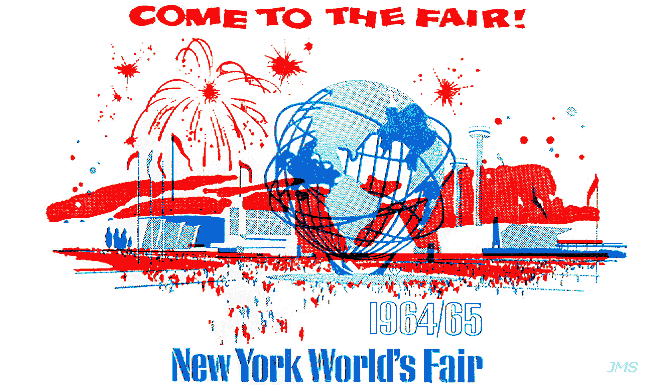
Fifty-two years ago, my soon to be wife and I visited the New York World's Fair. Reading this book inspired me to revise my 1964-65 New York World's Fair web page with several new photos plus additional explanatory text.
Verdict: Recommended - a good and colorful overview of the Fair with detailed explanations of of the various pavilions and exhibits. It brought back some fine memories for me. (posted 10/16/17, permalink)
'A Pope And A President: John Paul II, Ronald Reagan, and the Extraordinary Untold Story of the 20th Century' by Paul Kengor
Once upon a time, the Soviet Union was very frightening. After the 1917 Russian revolution, which gave birth to Leninism and the USSR, communism was quickly exported to the West. The U.S. was full of commies by the 1930s, partly because the tough times the Great Depression caused people to seek out alternatives. Then Stalin got a incredible deal from a frail, sickly FDR during the WWII Yalta talks. This increased his territory and his grip on Europe.
The Ruskies detonated their first nuke in 1949. Soon after, schoolchildren practiced duck and cover in classrooms across the U.S. (I remember participating in such drills) and people began building bomb shelters in their back yards. By the 1950s, the communist infiltration threat was considered serious enough to be the subject of Congressional hearings.
Americans were shocked when the USSR put a satellite into orbit in 1957; we didn't think the Ruskies had the technology. At the time, I was a freshman in high school. My school and many others were contemplating the addition of Russian to their languages curriculum. It was speculated that future scientists and engineers would be reviewing Russian technical papers.
The Catholic Church was always aware of the evil of communism. During the apparition of the Blessed Virgin Mary at Fatima in 1917, she prophesied, "If my requests are heeded, Russia will be converted, and there will be peace. If not, she will spread her errors throughout the world, causing wars and persecutions of the Church." During my childhood, most Masses in America concluded with a special prayer for the conversion of Russia. Catholics interpreted this to mean that the USSR would be rid of communism and Christianity would return if we prayed hard enough.
This book is about the fall of the USSR and how Pope John Paul II and Ronald Reagan worked to make it happen. Kengor posits that both the pope and the president understood the role of Divine Providence in their lives and in history. And he weaves the Fatima apparitions into the story as an important element.
I don't think that there's an untrue word in this book. Kengor correctly presents President Reagan and Pope John Paul II in a positive light. He also clears up the role of Pope Pius XII, who is shown not only to be anti-Nazi but anti-communist as well. Stalin's minions did much to smear this pope during his 1939-58 reign. For John Paul II, the Russians took stronger measures - attempting to assassinate him.
The problem with the book is that it presents Russia's decline in simplistic terms, focusing mostly on the actions of two powerful individuals and inspiration drawn from their faiths. Unfortunately, Margaret Thatcher, another key player, received almost no mention. Lech Walesa, leader of the Polish Solidarity movement, doesn't get enough credit for his efforts.
The USSR collapsed because its economy was severely weakened during the 1980s by declining energy prices. Modern communication technology - often in the form of bootlegged audio and videotapes, exposed the wealth and corruption of the Communist Party elite. The people of the USSR and the Baltic satellites became disgusted and disillusioned. They began to break away from a weakened Mother Russia. Ronald Reagan's Star Wars initiative accelerated the arms race. This forced the USSR to massively increase defense spending which, in the face of declining oil revenues, contributed heavily to communism's economic collapse. Soviet president Mikhail Gorbachev instituted radical reforms during his six years as the leader of the USSR but these attempts at modernization came too late and actually backfired, accelerating the Soviet downfall.
Was there also Divine Intervention from Mary in these events? I believe in the power of prayer but this book only offers strong inferences, not legal proof. Readers will have to, as priests and nuns used to say to me, "Take it on Faith." Read the book and draw your own conclusions.
Meanwhile, contemporary Russia is reverting to its old, militaristic, expansionist ways under Vladimir Putin and the commies in nuclearized North Korea are the biggest threat to today's world. Pope Francis urges "diplomacy" with the Hermit Kingdom - a strategy which has produced less than nothing over the last two decades. Lasting peace is elusive but prayers of good people continue.
Verdict: Recommended for history buffs, especially those who are Catholic. While I enjoyed the book, its 690+ pages weighed heavily, especially since there was much repetition. (posted 10/12/17, permalink)
'Killers Of The Flower Moon: The Osage Murders and the Birth of the FBI' by David Grann
This was a disturbing tale about prejudice, greed and death of wealthy Native Americans in order to steal their income. In the 1920s, the richest people per capita in the world were members of the Osage Indian Nation in Oklahoma. Their mysterious and suspicious deaths remained mostly ignored and unsolved until FBI Agent and former Texas Ranger Tom White and his crew arrived on the scene and discovered conspiracies by white men to embezzle, defraud and, in many cases, kill Osage tribal members to obtain their oil rights.
This should have been an exciting tale. Unfortunately, the author makes this story a dry and tedious read. In the end, Tom White was never given full credit for his work because of J. Edgar Hoover's ego. Surprisingly, many of the culprits had enough pull within the legal system to escape the death penalty and serve undeservedly short sentences. Justice was not well served.
Verdict: This chilling, true story needs to be told but, unfortunately, the author flubbed it by making it dull and lifeless. (posted 10/6/17, permalink)
'The Medici: Power, Money, and Ambition in the Italian Renaissance' by Paul Strathern
This is a compelling and dramatic account of the rise and fall of the Medici family and the events which surrounded them, many of which they created. From the 13th to the 16th Century, the Medicis were involved with political, scientific and artistic events. They intermingled with popes (and produced four of them), DaVinci, Michelangelo, Donatello, Copernicus, Galileo and Pico della Mirandola.
The Medicis witnessed and/or were involved in the Great Western Schism, the Renaissance, Henry VIII's break with Catholicism, the 30 Years War and various assassinations. The family was responsible for the rise of Florence. Catherine de' Médicis became Queen of France and played a major role in directing the country through three sovereign reigns.
The book began with the 1478 conspiracy to kill Lorenzo Medici and his younger brother Giuliano during Easter Mass at Florence's Santa Maria del Fiore. The assassination attempt ended with the death of Giuliano and an injured Lorenzo. The conspiracy involved the rival Pazzi and Salviati families, as well as the priest presiding over the Mass, Francesco Salviati (Archbishop of Pisa) and even Pope Sixtus IV. This exciting first chapter is a vivid introduction to the tumultuous times in which the Medicis lived.
The book includes much peripheral history, including tales of the corrupt Vatican, the selling of indulgences by Catholic priests and bishops, the ability to 'buy' a position as Cardinal, the widespread debauchery of clergy and the mendacity of various princes and kings. I learned much from this 400+ page history; parts of it read like a salacious tabloid.
|
|
In St. Peter's Square (2002) not far from the Vatican gift shop. No indulgences were for sale - just stamps, statues, rosaries blessed by the Pope and assorted tasteless, religious-themed tchotchkes.
|
I had one complaint: the book's printed Roman font varied randomly. It is not a change in font size, rather a vertical stretching on certain lines of text and happened somewhere on almost every page. It was most annoying.
Verdict: Very educational - recommended. (posted 10/2/17, permalink)
'Smaller Faster Lighter Denser Cheaper: How Innovation Keeps Proving the Catastrophists Wrong' by Robert Bryce
This book has a really cool cover design and an attention-grabbing title, so I got sucked in to reading it. The book is an answer to all those who think that the U.S. is doomed due to environmental and energy issues. The author rebuts such nonsense with facts and stories about how innovation is providing prosperity, while protecting the environment and increasing our energy independence. Bryce makes a compelling case for his viewpoint, believing that innovation, rather that alternative energy (wind and solar), is the secret to continued growth. His argument for nuclear plants, however, falls on deaf ears - in the public's and regulators' eyes. That ship has sailed - sadly.
That said, some of the facts and stories presented here are well-known and needed no further proof. I found sections of the book boring and was irritated when the author insisted on using metric measurements, especially since the book seemed aimed at the U.S. market. He did so because he believes in the metric system. How 1970s of him.
Verdict: Has good data in case you ever get a chance to debate Al Gore. (posted 9/28/17, permalink)
'The Deplorables' Guide To Making America Great Again' by Todd Starnes
This 189-page paperback tells stories of the many politically-correct outrages in this country. The book has two problems:
• The font size was too small making the book difficult to read.
• If you watch Fox News or visit conservative websites, you already know most of the tales contained in the book.
Verdict: Superfluous, unless you've spent the last two years in a cave. Or watching CNN. (posted 9/26/17, permalink)
'The Closing Of The Muslim Mind: How Intellectual Suicide Created the Modern Islamist Crisis' by Robert R. Reilly
At just over 200 pages, this is a very short book. But it's a dense book and requires one's full attention. The book reads like a history textbook and almost demands a semester to assimilate it.
This book makes for a tough read because there are no humorous anecdotes to lighten-up the content and there are no happy endings offered. It begins with a description the original ideas that eventually inspired Islam's self-inflicted intellectual decapitation. Initially, in the 700-1100 AD period, Islamic thought was a vital component of world intellectual history. But Islam quickly fractured and descended into a divisive crisis. In the book, there is a story of an Islamic philosopher who refused to eat a watermelon because there was no record of a Muslim ever eating one. This explains the closing of the Muslim mind in one sentence. Such thinking explains why the Arab world stands near the bottom of every measure of human development and why there are no great Islamic scientists today.
Why is this important to us? Because Muslims are the fastest-growing religious group in the world. Islam is currently the world's second-largest religion just behind Christianity. The book demonstrates that terrorism is just one manifestation of the spiritual pathology of Islamism.
Reilly offers little hope of Muslims assimilating into Western society. All of us hope that this is not the case, but the historical facts laid out in the book are hard to dispute.
Verdict: Worthwhile read. (posted 9/20/17, permalink)
'Before The Fall' by Noah Hawley
I read a lot of novels but rarely write reviews about them. This whodunnit story is exceptional and deserves a mention. Noah Hawley's 400-page narrative begins with the crash of a private jet into the Atlantic off Martha's Vineyard.
In this carefully-crafted tale, things are not as they seem. Using flashbacks to profile the victims and survivors, the author peels the layers chapter by chapter, exposing stories within stories. Characters are interesting and flawed. This book captured my interest and I couldn't put it down.
Verdict: Highly recommended. (posted 9/14/17, permalink)
'Shattered: Inside Hillary Clinton's Doomed Campaign' by Jonathan Allen and Amie Parnes
These two pro-Hillary authors were given inside access to her 2016 campaign, expecting to write a book about her win and subsequent coronation. Instead, they wrote 'Shattered'.
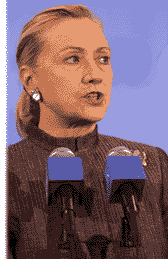 The Clinton campaign hired competent professionals but tied them up in knots with palace intrigue, mistreatment as well as confusing and often conflicting assignments. Frequently, staff were at war with one another. The authors refer to both "the Clinton bubble" and "the campaign bubble," each an insular world out of touch with street-level issues. This was in sharp contrast to Barack Obama's campaigns, which ran so smoothly that he was given the nickname No-Drama Obama. The Clinton campaign hired competent professionals but tied them up in knots with palace intrigue, mistreatment as well as confusing and often conflicting assignments. Frequently, staff were at war with one another. The authors refer to both "the Clinton bubble" and "the campaign bubble," each an insular world out of touch with street-level issues. This was in sharp contrast to Barack Obama's campaigns, which ran so smoothly that he was given the nickname No-Drama Obama.
The dysfunctional Hillary campaign was shocked by Bernie Sanders primary successes. They had no idea that people were so angry about politics-as-usual. In the general election, they blew off Donald Trump's campaign, ignoring the far larger crowds he drew compared with Hillary's (during the final three months of the campaign, Donald Trump had twelve times as many attendees as Hillary at rallies) and relying on analytics, which turned out to be based on flawed assumptions. Campaign manager Robby Mook caught much of the blame for this, but the fact is that most pollsters - even ones with stellar track records - called this election wrong.
The authors lay the ultimate blame for Hillary's failure on Hillary herself. She never had a message or a vision. She continually asked speechwriters and senior staff, "What is my message?" Despite lots of input from them, she never developed one. (I think most successful candidates develop their own message based on their values and their connection with the populace; they don't need to run around asking others.) Hillary could neither articulate what she stood for nor did she know what voters really wanted. She may have pretended to listen to voters during her pre-campaign Listening Tours but she failed to process what they told her and never distilled those responses into a succinct message.
Hillary's slogan: Stronger Together. What does that even mean? (Sounds like a tagline for a two-component epoxy glue.) Trump's slogan: Make America Great Again. No explanation needed.
Many times, hubby Bill Clinton (the Great Philanderer but also the Great Communicator) wanted to hit the road, talk to prospective voters and get their input, but Hillary and the campaign advisers held him back, fearing that ol' Bill might make one of his famous verbal gaffes. Or end up in a hotel room with a comely blonde baton-twirler (as part of his 'connecting with the people').
And so, Hillary lost. At the end of the book, she blames everyone else (FBI Director James Comey, Bernie Sanders, the Russians and later, Macedonia) for her loss - everyone but herself. Still clueless and tone-deaf, she remains convinced that she was not at fault. To this day, she still refuses to accept personal responsibility for losing the 2016 presidential race.
Verdict: Recommended. If you're a political junkie, you'll enjoy this inside look at Hillary's downfall and exactly how the train wreck unfolded. (posted 9/6/17, permalink)
'Tools Of The Titans: The Tactics, Routines, and Habits of Billionaires, Icons, and World-Class Performers' by Tim Ferriss
Tim Ferriss is a self-help author, entrepreneur, public speaker and self-proclaimed "human guinea pig" who experiments with drugs, extreme dieting and large doses of nutritional supplements. Although I've read numerous business books and articles, I had never hear of him.
Ferriss is apparently a well-known podcast author, although I've never listened to a complete podcast by anyone, so I'm unable to judge the quality of his podcast series. This book's content consists of material from some of his guests on 'The Tim Ferriss Show' podcast. Several reviewers complained that this book consists of nothing but poorly-edited transcripts/excerpts from his podcasts. I would add that the hardback edition is cheap-looking with no jacket and with poor-quality printing on many of the inside pages.
Every one of the 100+ people interviewed in this book are first asked, "What's your spirit animal?" WTF?! I don't know anyone who has such a thing. Ferris adds blather of his own after each interview - things like: "Nearly every morning, I sit down with a hot cocktail of tumeric, ginger, pu-erh tea and green tea." How odd and pretentious is that? By the way, I didn't know what the hell 'pu-erh' tea was; it turns out to be a "variety of fermented tea produced in Yunnan province, China, and named after the town of Pu'er." Definitely not Liptons, Earl Grey or Irish Breakfast. They're too plebeian, I suppose.
Many of his interviewees do meditation, especially Transcendental Meditation to help them start their mornings. Surprisingly, not one of the many people interviewed talked about prayer or God. Do you have to be an agnostic to get on this guy's show? Sprinkled throughout the book are off-the-wall diet and exercise tips with headings such as 'Cold is a great purifying force'. That's a 'tool'? No, this is a tool:

Ferriss believes that you can't be focused and successful without extreme diet and exercise. Hmmmm. What about the late Roger Ailes, a fat carnivore who built Fox News from nothing to the dominant cable news channel in America? Good health, proper diet and exercise are good things but I've never seen proof that they will make you a billionaire. Many very successful people of the past were heavy drinkers and chain-smokers. (cf: 'Mad Men')
The book's promised tools and tactics are often lame and generic along with unoriginal platitudes and clichés. If you want to be inspired, you may as well watch the comedy film 'Galaxy Quest', where Tim Allen's character often proclaimed, "Never give up; never surrender." By Grabthar's hammer, he's right! That's better advice than much of the dreck in this book. And did I mention the author's endless self-promotion on what seemed like every other page?
Many of the alleged titans offered variations on my oft-repeated advice for business owners: "Keep trying until something works." I would also point out that most of his 'titans' are Silicon Valley tech guys and minor celebrities. There were a lot of people whose names and companies I had never heard of before.
My business column, 'How To Start A Business', initially published 20 years ago, is still relevant and is a condensed version of what Ferriss takes 700+ pages to convey.
There are also stories of people dealing with crises. I found no magic there. The way to get through a crisis is, as I wrote about when fighting cancer: "One day at a time. One step at a time. Put one foot in front of the other." Hmmmmm ... sounds a bit like the ancient proverb from Chinese philosopher Laozi in the 'Tao Te Ching', "The journey of a thousand miles begins with a single step." That works, too.
In summation, I found nothing in the way of unique, helpful information in the book ... ummm ... except for this: the author was discussing how to remove time-wasting activities from your life. Suddenly, I decided that his book was wasting my time, so I quit at the halfway point. Therefore, it's theoretically possible - but unlikely - that the last part of the book was brilliant.
Verdict: A worthless, cliche-ridden, grab-bag of detritus. There are much better business books out there. Pick one - almost any are better than this. Over the past 13 years, I've reviewed quite a few of them. (posted 8/31/17, permalink)

'Leading Lady: Sherry Lansing and the Making of a Hollywood Groundbreaker' by Stephen Galloway
This 400-plus page book is a selective biography of Sherry Lansing, who became the first woman ever to be named president of a major movie studio. Unfortunately, the Hollywood gossip isn't very interesting and the chaotic sausage-making look at movie production was a turn-off for me. Yes, there were lots of behind-the-scenes tales about movies as 'Titanic', 'Forrest Gump', 'Braveheart', 'Saving Private Ryan', 'The Sum of All Fears' and other box office hits. But those weren't enough to redeem this book.
Lansing has lived an interesting life and walked away from show business to devote herself to charitable and other causes. She seems like a cordial and well-liked person in an industry not known for niceness.
I blame the author for failing to produce a compelling work. In Hollywood, screenplays often get multiple rewrites. That's what should have been done to this book.
Verdict: Undeservedly boring. (posted 8/25/17, permalink)
'The Land Of Enterprise: A Business History Of The United States' by Benjamin C. Waterhouse
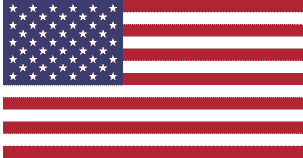 Enterprise has always been undervalued as a component and driver of U.S. history. Waterhouse's 288-page book attempts to tell the story through the eyes of business people - traders, entrepreneurs executives, bankers and farmers - from colonial times to the present. His tale leaves behind a trail of hits and misses. Enterprise has always been undervalued as a component and driver of U.S. history. Waterhouse's 288-page book attempts to tell the story through the eyes of business people - traders, entrepreneurs executives, bankers and farmers - from colonial times to the present. His tale leaves behind a trail of hits and misses.
Early in the book, the author claims that a Massachusetts railroad was the first firm to initiate decentralized decision-making in 1841. It seems to me that sea captains, trade agents and trading company managers had broad authority, too - dating back centuries. For example, the Hudson's Bay Company dates back to 1670 and the East India Company to 1600. On the other hand, the author's comparison of the Southern agrarian economy and the effect of the cotton gin on it seemed dead on. But I think he got the 1960s protests wrong - to me, they seemed to have little effect on most businesses, except for producers of tie-dyed clothing and incense makers. The business history of the 1970s and 1980s had several errors of fact and interpretation, in my view.
Unfortunately, the book also carries a whiff of those soulless history texts used in schools. The business history of America is an exciting one and there are too many dull spots in Waterhouse's book. 'An Empire of Wealth: The Epic History of American Economic Power' by John Steele Gordon tells much of the same story in a far more exciting way.
Verdict: Even though 'An Empire of Wealth' was published in 2005, you'd be better off finding an old copy of that book and reading it instead of Mr. Waterhouse's lesser offering. (posted 8/21/17, permalink)
'The Devil's Mercedes: The Bizarre and Disturbing Adventures of Hitler's Limousine in America' by Robert Klara
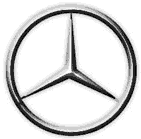 You know how you go to a party and there's a sudden lull as conversations halt when everyone seems to run out of stuff to say? Here's a way to liven things up: Just ask, "Did you know that Howdy Doody was once in Hitler's car?" More on that later. You know how you go to a party and there's a sudden lull as conversations halt when everyone seems to run out of stuff to say? Here's a way to liven things up: Just ask, "Did you know that Howdy Doody was once in Hitler's car?" More on that later.
I had low expectations for this book. A story about Adolf Hitler's Mercedes seemed more suitable for a magazine article than a 350-plus page book. But author Klara is an excellent storyteller and manages to flesh out the pages quite well.
The 20-foot long, 10,000 pound Mercedes-Benz 770K armored open touring car, also known as a Großer Mercedes, is an interesting car unto itself. It had a 467 cubic-inch straight-eight engine with a supercharger loud enough to wake the dead. The beast rode on a 153-inch wheelbase and was a truck-like 81 inches wide. These open cars were favorites of the Nazi high command and there are several photos of Hitler riding in one.
The build quality on these automobiles must be experienced to be believed. Twenty-five years ago, I had a chance to closely examine one of these armored Nazi Mercedes undergoing restoration. The massive bullet-proof doors were thick and heavy and swung on humongous hinges. But the balance was so precise I could move the door effortlessly with just two fingers.
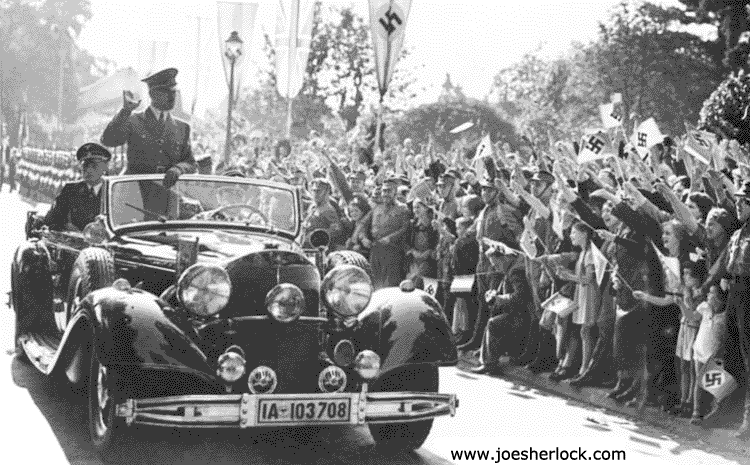
The car most often used by Adolf had a front passenger seat tilted up, revealing a raised platform on which Der Führer stood as he did his Sieg Heil salute with one hand and held on to a special windshield grab bar with the other during parades. The platform also made Hitler appear six inches taller than he really was. That particular Mercedes-Benz is a dark blue example and is displayed at the Canadian War Museum in Ottawa in mostly unrestored condition. But it took a long time to figure out that this example was the Actual Hitler Car and the story of the quest to identify which parade car was which makes for a fascinating tale with many characters, carnies and hustlers involved.
In 1948, a vehicle thought to be Hitler's parade car arrived in the U.S. and was displayed at Rockefeller Center. That's when Mr. Doody occupied the front passenger seat where Der Führer would have sat. Buffalo Bob was behind the wheel and some Peanut Gallery kids were in the back seat, holding balloons.
Today, everyone in the old car business knows Barrett-Jackson. But, when Tom Barrett and Russ Jackson held their very first vehicle auction in the early 1970s, two Mercedes-Benz 770K Phaetons that formerly served as German dictator Adolf Hitler's staff cars went under the gavel. One of the Phaetons more than tripled the previous world auction record for automobiles, selling for $153,200.
This vehicle, often referred to as 'Hitler's car' was presented as a gift to Finland's Field Marshal Mannerheim in 1942. Hitler only rode in the car briefly. Eventually, the car was purchased by General William Lyon, a well-known connoisseur of fine vintage aircraft and automobiles. Lyons had the derelict car properly restored over a twenty-year period. At the 2014 Pebble Beach Pebble Beach Concours d'Elegance, Lyons' black 1941 Mercedes-Benz 770K W150 Offener Tourenwagen won first place in its class.
Here's another automotive tidbit: In 1948, the Swedish American Line's MS Stockholm carried the Mannerheim Mercedes-Benz 770K to America in its hold. The Italian ocean liner SS Andrea Doria was sunk in 1956 after the MS Stockholm collided with it. When the Andrea Doria sank, a one-of-a-kind concept car - the Chrysler Norseman - was in its hold and went down with the ship. The Norseman was designed by legendary stylist Virgil Exner and built by Ghia of Turin. It was scheduled to make the rounds of various American auto shows as the crown jewel of the Chrysler exhibit. Alas, the Norseman remains at the bottom of the Atlantic and relatively few photos of the car exist.
There are many twists and turns in the stories of these rare Mercedes automobiles and the various tales and foibles make the book a very worthwhile read.
Verdict: Highly recommended. (posted 8/17/17, permalink)
'How The Hell Did This Happen: The Election Of 2016' by P.J. O'Rourke
Once upon a time, O'Rourke wrote brilliantly witty books on a variety of subjects. Apparently he no longer does so. Instead, his publisher has released a 256-page compilation of previously-published material about the 2016 presidential primary and election with a few new paragraphs added. This is sad because I particularly enjoyed his 2009 offering: 'Driving Like Crazy'.
'How The Hell Did This Happen' was devoid of even a laugh or a chuckle. The pages are filled with cheap shots about every candidate. P.J. can't get enough of Chris Christie fat jokes. He saved his best 55-gallon drum of unfunny vitriol to pour over the head of Donald Trump.
In the end, O'Rourke, an admitted Republican and unadmitted Never-Trumper, held his nose and voted for Hillary.
Verdict: An epic fail. So is the book. (posted 8/11/17, permalink)
'Agent 110: An American Spymaster and the German Resistance in WWII' by Scott Miller
I enjoy reading a good spy novel. Unfortunately, stories about real-life spies often fail to live up to the standard set by novels.
Such is the case with 'Agent 110'. Allen Dulles seems to be a dull character. His wife didn't think much of him either. Clover Dulles once said, "My husband doesn't converse with me ... It took me a long time to realize that when he talks it is only for the purpose of obtaining something ... He has either to be making someone admire him, or to be receiving some information worth his while; otherwise, he gives one the impression that he doesn't talk because the person isn't worth talking to."
This 368-page account of Dulles' spymaster activities in Switzerland during World War II is slow going. He encouraged Germans who wanted to overthrow Hitler but those efforts bore no fruit and the agents seemed hapless.
Verdict: A tedious tale. (posted 8/7/17, permalink)
'The President Will See You Now: My Stories and Lessons from Ronald Reagan's Final Years' by Peggy Grande
This 262-page book is exactly as the title promises, with lots of good stories. Peggy Grande, Ronald Reagan's longtime personal assistant, worked closely with the president for 10 years after he left the White House and has penned a moving memoir about the former president's twilight years. As a long-time fan of President Reagan, I looked forward to reading it.
The book is respectful, although Grande comes off as a little too perky and enthusiastic at times. Some of her observations border on sappy and, like Tom Wolfe and Elaine Benes, she is much too fond of exclamation points!!!
Nevertheless, this is a unique portrait of our late president and reveals much about his post-presidential years.
Verdict: Good read overall. (posted 8/1/17, permalink)

'The Jersey Brothers: A Missing Naval Officer in the Pacific and His Family's Quest to Bring Him Home' by Sally Mott Freeman
This is the extraordinary story of the three Mott brothers of New Jersey and their experiences in the U.S. Navy during World War II. The author is the daughter of one of the brothers and she was born well after the war ended. Here knowledge of the war is deep and, as far as I could tell, impeccable given that she spent 10 years researching this book.
Interwoven in the brother's biographies is this history of the war itself - the fighting, the planning, the inter-branch military disputes and the effects of the war on civilian lives, especially the life of the boys' mother.
This book is no friend of General MacArthur, his toady Courtney Whitney or the Pacific Army Command in general - the backstabbing and political maneuvering was often detrimental to the overall war effort and deadly to enlisted men.
Appointed Chief of Naval Operations in the post-Pearl Harbor shake-up, the brilliant and irascible Admiral Ernest J. King, was suspicious of the Army and the British; he felt that both conspired to deprive the Pacific Naval Theater of support and materiel in order to get more supplies for the European Theater. After his promotion to CNO, he reportedly quipped, "When they get in trouble they send for the sons-of-bitches." Many key players such as Admiral King are referred to in this book. They are not presented as lightly-sketched personalities. The author describes people so well that one feels as if one has actually met them.
The author's lengthy quest for hard-to-locate details is familiar. My dad got out of the Navy around May 1946 and, like most vets, quietly returned to normal civilian life. He rarely spoke of the war. The few things I've learned about his wartime experiences, I found out from shipmates after his death. There are no more answers or details available any more - all of them are now gone.
My mom's first cousin - a Jesuit priest - was, like Benny Mott, a POW in the Philippines. Father John was liberated the day before his scheduled execution. As a kid, I found him to be a quiet and kinda-scary guy; in those days, little was known about PTSD. He obviously suffered from it and had difficulty coping. Nevertheless, he continued to serve his religious community actively until his death in 1981.
The heroics found within the book's pages are very moving - right up there with 'Flags Of Our Fathers' by James Bradley and 'Unbroken: A World War II Story of Survival, Resilience, and Redemption' by Laura Hillenbrand.
The author vividly relates the horror of the Japanese POW camps during the period. Japan imposed atrocity, torture and death on a staggering scale. Japan held 132,000 POWs - one in four died while imprisoned, compared with only 1% of Americans held by Nazis and Italians. They were beaten, burned, clubbed or otherwise tortured. Knowing that they were going to lose the war, the Japanese military planned to execute all POWs. Thankfully, the atomic bombs stopped them from carrying out that mission to its fullest.
Verdict: Highly recommended. Sally Mott Freeman is a masterful storyteller and her book is a great and poignant history lesson. (posted 7/28/17, permalink)
'Hillbilly Elegy: A Memoir of a Family and Culture in Crisis' by J.D. Vance
Here's how this book begins: "My name is J.D. Vance, and I think I should start with a confession: I find the existence of the book you hold in your hands somewhat absurd. It says right there on the cover that it's a memoir, but I'm thirty-one years old, and I'll be the first to admit that I've accomplished nothing great in my life, certainly nothing that would justify a complete stranger paying money to read about it." He's right. You'd be nuts to pay 16 bucks for this sob story, peddled by the publisher as "riveting .. inspirational and essential reading."
First - a disclaimer. My only experience with hillbillies was when I watched a few minutes of 'Hee-Haw' many years ago. That said, there's nothing unique about Vance's story because it's not really about hillbillies. It's about any group of poor people, who have limited options because of dysfunctional family situations, lack of education, bad decisions, drugs, and/or an inability to adapt to a changing world. Similar stories could have been found in hypothetical books such as 'Ghetto Elegy', 'Rust Belt Elegy', 'Biggest Employer Left Small Town Elegy', etc.
This 272-page book is said to be "part memoir, part historical and social analysis." There's not much analysis and what's there is pretty superficial. Vance was rescued by caring grandparents as well as other family members, when his biological parents failed him. He worked hard as well and he's become a successful attorney and "principal at a leading Silicon Valley investment firm." That's great but Vance's story is not particularly unique. There are tens of thousands of disadvantaged children who also overcame obstacles because of intervention by caring relatives. And because they toiled diligently to met their goals.
I found no message in this book. Vance doesn't offer solutions for others, except perhaps that he escaped because of helping hands and perseverance and that, maybe, others can do so, too.
Verdict: Not particularly 'riveting'. Skip it. (posted 7/24/17, permalink)
'Creative Industries Of Detroit: The Untold Story of Detroit's Secret Concept Car Builder' by Leon Dixon
In the 1970s, I spent time in the Detroit area, working with automotive manufacturers and their suppliers. The industrial sections of the metro area were chock full of small companies which made their living supplying components and services to the Big Three automakers. These thousands of firms were unknown to the public at large. Creative Industries was one of them.
This book is about the many achievements of Creative, including behind the scenes looks at some well-known prototypes, concept cars and limited-production vehicles. Company owners Fred Johnson and Rex Terry are profiled within the pages. Both were amazing entrepreneurs who built their company by intensely focusing on the needs of their transport-related clients. And offering solutions to unanticipated problems.
The majority of the book looks at the postwar period through the 1960s. Readers will learn the back stories behind iconic showcars, dream cars and prototypes, such as the Ford Atmos-FX, Mercury XM-800, Dodge Granada, Packard Balboa, Packard Panther, Packard Request, Packard Predictor, Ford Mystere, Dodge Charger I and Plymouth VIP show cars, the El Morocco (a poor man's Caddy Eldorado) and the bizarre-looking winged Plymouth Superbird.
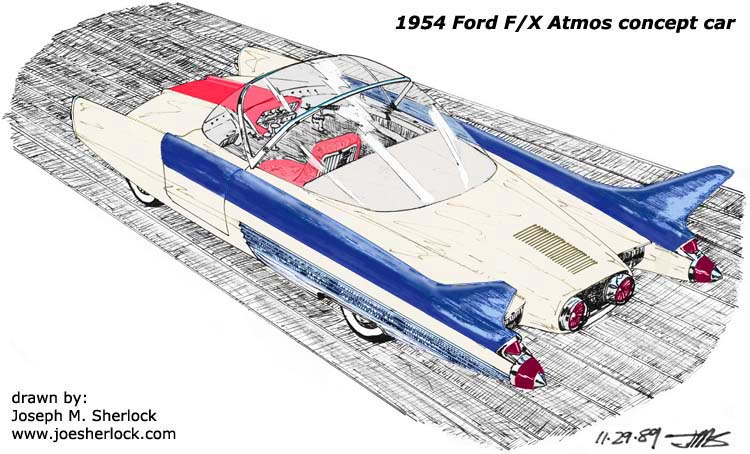
It's a very good book - full of interesting information - but not a perfect one. Dixon's writing style lacks polish and I found a few mistakes, not about Creative, but aspects of the outside auto industry. The book leaves many questions unanswered, not because of a lack of research by the author, but because much of the Creative's work was done in secret and subsequent files are missing or were destroyed. The book is a 192-page large-format (8.5 x 11) paperback and contains lots of images. I wish some of the photos were bigger.
The book provides an illustrated, behind the scenes trip through an important time when American automakers ruled the industry and were free to dream big. Dixon concludes his book with contemporary photos of the mostly-abandoned Creative Industries physical locations. It is sad to see but it's representative of what Detroit has become. Onerous federal regulations means car companies now spend their money on compliance issues rather than dream cars. The annual model restyle is a mere dust mite in the eye of auto history. Foreign competition has reduced profits, forcing supplier consolidation. Urban decay forced many suppliers to leave the metro area for more pleasant surroundings, especially now that Detroit is no longer the epicenter of the car biz.
My last visit to Detroit was in 1995 for the Diamond Anniversary Lincoln Celebration. FoMoCo provided me a Lincoln Mark VIII to evaluate and, as I drove around, I was appalled by the poor condition of the roadways and the number of abandoned commercial and industrial buildings. Obviously, things have gotten much worse since then.
Verdict: Recommended. I learned a great deal from this book and it was a fun trip down automotive memory lane. (posted 7/20/17, permalink)
'The Man Who Designed The Future: Norman Bel Geddes and the Invention of Twentieth-Century America' by B. Alexandra Szerlip
The jacket blurb for this book opened thusly: "Before there was Steve Jobs, there was Norman Bel Geddes." This was my first clue that disappointment might lie ahead. Bel Geddes was an innovative theatrical set and lighting designer, who revolutionized stage plays in the 1920s. He later moved on to industrial design, styling radios, kitchen ovens and the 1934 Electrolux refrigerator. His most notable accomplishment was Futurama, the spectacular General Motors exhibit at the 1939-40 New York World's Fair. But Norman Bel Geddes never came up with market-disruptive, insanely-great, industry-changing products the way Steve Jobs did.
I'm no expert in design history but I found numerous mistakes in this book:
• Ms. Szerlip discussed Lucite, a clear acrylic plastic, as a decorative theatrical element in the 1928-31 period. But acrylic sheet was not offered in commercial quantities until the late 1930s.
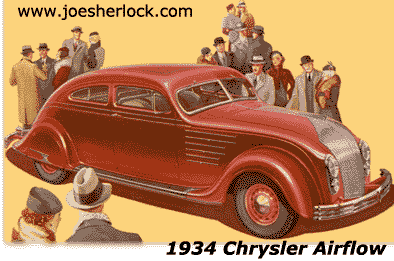 • The author claimed that Bel Geddes consulted on the initial design of the ill-fated Chrysler Airflow. Knowledgeable automotive historians say that he had nothing to do with the design and development of the original Airflow but was called in to 'improve' the car's appearance because the homely 1934 model was a sales disaster. Bel Geddes reportedly endowed the 1935 models with a new hood, ending in a V-shaped grille (replacing the unloved waterfall unit of '34) which visually lengthened the hood and made it look less stubby. He also rearranged some trim and bumpers. The result was an improvement but it didn't help sales much. • The author claimed that Bel Geddes consulted on the initial design of the ill-fated Chrysler Airflow. Knowledgeable automotive historians say that he had nothing to do with the design and development of the original Airflow but was called in to 'improve' the car's appearance because the homely 1934 model was a sales disaster. Bel Geddes reportedly endowed the 1935 models with a new hood, ending in a V-shaped grille (replacing the unloved waterfall unit of '34) which visually lengthened the hood and made it look less stubby. He also rearranged some trim and bumpers. The result was an improvement but it didn't help sales much.
Chrysler offered a more conventional-looking automobile, the Airstream, starting in 1935. In 1936, Chrysler sold only 1,590 of its Airflow four-door sedans. In contrast, over 6,500 Airstream four-door models found buyers that year. The unpopular Airflow was discontinued after the '37 model year. Ms. Szerlip provides a lot of detail - an entire chapter - about the Airflow and its development. I think most of the content is dead wrong and the Airflow story doesn't belong in this book because Bel Geddes' involvement was so minimal.
• Her lengthy soliloquy to the Airflow ends with the assertion that the June 1938 issue of Action Comics No. 1 has Superman smashing a Chrysler Airflow. This is stunningly erroneous. The generic green sedan on cover of the epochal comic seems to be blend of a '38 Chevy and '37 Dodge. Her repeated claim that the failure of the Airflow was not due to its odd appearance has been refuted by many auto experts.
• The author wrote, "In 1936, Raymond Loewy was given permission to make suggestions for improvements to Pennsylvania Railroad's ... GG-1 [sic] locomotive." Actually, Mr. Loewy restyled the prototype in 1934. The author derided the smooth, seamless, welded construction of Loewy's production GG1, as though this approach is nothing special. The fact is that Loewy's idea of fully-welded body construction was somewhat unique in the railroad field. Other famous early streamliners did not use smooth, seamless welds - the Union Pacific M-10000, debuting in early 1934, had a riveted body. The stainless steel Burlington Pioneer Zephyr, constructed in April 1934, featured rough, shotwelded construction.
It should also be noted that, unlike well-known industrial designers Henry Dreyfuss (New York Central's Mercury train and Twentieth Century Limited's streamlined Hudson steam loco) and Otto Kuhler (Milwaukee Road's Hiawatha), Bel Geddes never designed a production locomotive, although he sketched a concept in 1928. BFD.
Raymond A. Loewy also designed Pennsy's distinctive S1, K4 and T1 streamlined steam locos, as well as some of the railroad's passenger coaches.
• There are numerous instances in the book where Ms. Szerlip belittles Mr. Loewy, one of Bel Geddes contemporaries in the industrial design field. Yet Raymond Loewy secured steady design work with an impressive roster of corporate clients over a 40+ year career, while Norman Bel Geddes seemed to have a erratic output of work - and cash flow - throughout his shorter career.
Loewy designed such automobile icons as the postwar three-box 1947 Studebaker, the 'European Look' 1953 Studebaker Starliner coupe and the sporty and sleek 1962 Studebaker Avanti. He also designed the Shell, Exxon, TWA and BP logos, the Greyhound Scenicruiser bus, Coca-Cola vending machines, the Lucky Strike cigarette package and Coldspot refrigerators. In 1961, at the request of Jacqueline Kennedy, he restyled Air Force One. The exterior paint scheme he recommended is still in use on the current iteration of Air Force One. Loewy also helped design the Skylab space station while under contract with NASA.
Raymond A. Loewy died rich and famous; Norman Bel Geddes died broke and relatively obscure. Nuff said.
• The author noted that, while a prototype television was displayed at the 1939 World's Fair, "more than a decade would pass before it would become commercially available." Not so. In fact, the first official, paid advertising to appear on American commercial television occurred on July 1, 1941, over New York station WNBT before a baseball game between the Brooklyn Dodgers and Philadelphia Phillies. Shortly after World War II, numerous daily television shows were broadcast in major U.S. cities. For example, 'Face to Face' - a game show - debuted in May, 1946. The ground-breaking drama series 'Kraft Television Theater' first appeared in May 1947; it was a very popular show and ran through 1958. The legendary Howdy Doody made his TV debut in late 1947 to the delight of children who had access to a television set. By the end of 1949, the small town of Greensboro, NC (population: 74,389) had 7,325 television sets in use.
• Ms. Szerlip wrote, "Xerox's first copier would appear in 1959." Haloid/Xerox's Model A was the first xerographic copier and debuted in 1949. Ten years later, the Xerox 914 was introduced and became the first successful copier to use plain paper.
• The author opined that the 1939 World's Fair was "rife with sexual innuendo," citing as one example the "eighteen-story breast-buttock Perisphere." How one finds breasts or buttocks in a giant, round white ping-pong ball is a puzzle to me. As Sigmund Freud reportedly said, "Sometimes a cigar is just a cigar."
Based on the mistakes I found (I'm sure there are more that I didn't uncover due to my lack of expert knowledge in many areas), I wouldn't trust anything typed by B. Alexandra Szerlip, even if she had her fingertips notarized. Furthermore, she has produced a boring, tedious, 400-plus page tome. Even though Bel Geddes was reportedly a theatrical master of light and color, there are no color plates in the book. His pinnacle achievement, Futurama, should have merited several full-page color images. The sparse number of black and white photos are small in size - a disappointment. I wanted to see more of Mr. Bel Geddes creations, including larger, more detailed images; the man was, after all, a designer.
Bel Geddes was obviously talented but was distracted - a womanizer, spendthrift and drinker, apparently. He also failed to focus on one major field; instead, Bel Geddes jumped around between theater set design, film production, circus layout, industrial design, game development, model-making and architecture. Perhaps that's why, almost 60 years after his death, this is the first in-depth biography of the man. And it's not a good one.
Verdict: Don't bother. (posted 7/14/17, permalink)
'The Making Of The President 2016: How Donald Trump Orchestrated a Revolution' by Roger Stone
Political journalist and historian Theodore H. White once owned the term 'The Making of the President', writing in-depth books about the 1960, 1964, 1968, 1972, 1976 and 1980 presidential elections. While Mr. White was a Democrat, he tried his best to mask his political leanings and report accurately. Of course, in the 1960s, most Democrats were centrists and not that different from Republicans. Campaign insiders were happy to talk candidly with Mr. White because they felt he would report things fairly.
Fast-forward to today. Theodore White is long-dead and campaign insiders are too busy writing their own tell-all books and have no interest in giving interviews to potential competitors. So, when the inside jacket of Roger Stone's book begins with "In the tradition of Theodore White's landmark books ...", you must take such blurbery with a grain ton of salt.
 That said, 'The Making Of The President 2016' is a pretty good book. It contains material culled from many news accounts with the added insider knowledge that Stone, a one-time Trump advisor, contributed. As I read it, the book rekindled a lot of detail that I had forgotten. Trump won the presidential election handily with over 300 electoral votes. He did so without the media's support and without the backing of numerous establishment Republicans. No matter - Mr. Trump took his case directly to the people and lots of people liked what they heard. That said, 'The Making Of The President 2016' is a pretty good book. It contains material culled from many news accounts with the added insider knowledge that Stone, a one-time Trump advisor, contributed. As I read it, the book rekindled a lot of detail that I had forgotten. Trump won the presidential election handily with over 300 electoral votes. He did so without the media's support and without the backing of numerous establishment Republicans. No matter - Mr. Trump took his case directly to the people and lots of people liked what they heard.
The 2016 presidential election was a revolt by the common people against the elites - Republicans, Democrats, Uncaring Bureaucrats with cushy, protected government jobs (Lois Lerner, for instance), Corrupt Corporate Insiders, Too-Big-To-Fail Banks, the IRS and others - who have betrayed their trust.
Hillary lost because she was an unlikable person. Barack Obama may well have been a failed president (only time will tell for sure), but he was generally well-liked. Many people thought that they'd enjoy having a beer - or a joint - with him. Hillary shrilled the messages 'You Owe Me' and 'It's My Turn', a fatal mistake made previously by John McCain, John 'Reporting For Duty' Kerry, Al Gore, Bob Dole, various Bushes, Teddy Kennedy and others. Hillary offered neither merits/accomplishments, nor a vision. Then there were the many Clinton scandals, including those e-mail bombshells. Democrats stayed home in droves.
During the final three months of the campaign, Donald Trump had twelve times as many attendees as Hillary at rallies. Hillary's speech on November 4th drew only 126 live participants, while Trump's same-day rally garnered over 12,000 people. Trump always drew large, enthusiastic crowds but no one had ever correlated crowds with votes before.
In the book, Stone pointed out that Donald Trump performed stronger among black and Hispanic voters than Mitt Romney did as the Republican nominee in 2012. Trump outperformed Romney by two points in each voting bloc. Trump claimed 29% of the Hispanic vote compared to Romney's 27% in 2012. With blacks, exit polls showed Trump claimed 8% of the vote to the previous Republican nominee's 6%. Trump won 58% of Cuban-American voters.
Trump/Pence won the overall Catholic vote 52-45. They won white Catholics 60-37, but lost Latino Catholics 67-26 - though among non-Spanish speaking Latino Catholics the margin was likely significantly closer. The pair won the evangelical vote 81-16, better than either Romney or Bush 43.
Stone is definitely partisan and doesn't hesitate to make his feelings known. He doesn't like the Bushes, Ted Cruz, Ed Rollins or Cory Lewandowski and makes no bones about it. Teddy White would have been more circumspect.
Verdict: Recommended. A well-written book which brought back a lot of campaign memories. Donald Trump ran an unique campaign the likes of which had never been seen before. Roger Stone captured and capsulated it quite well, even if he's no Theodore White. (posted 7/10/17, permalink)
'The Hidden White House: Harry Truman and the Reconstruction of America's Most Famous Residence' by Robert Klara
The White House was built on a swamp in the late 18th Century. The British set it afire in 1814 and seriously damaged the structure. Various presidents have made changes to the house; many of the changes put undue strains on the already questionable structure.
In 1948, President Harry Truman was enjoying a bath on the White House's second floor when he and the tub almost plunged through the ceiling of the Blue Room and literally crashed a party. Shortly afterwards, Margaret Truman's piano broke through the floor of a second floor room. The White House was declared unfit for human habitation and the Trumans had to live at Blair house for the next four years.
In essence, the building was gutted; only its four exterior walls remained standing. Inside a new steel beam building was constructed with new footings which extended below the swampland. Additional changes were made during construction such as the addition of a large fallout shelter when it was discovered that the Russians had secretly exploded an atom bomb.
Author Robert Klara revealed what been little understood about this episode. Klara offered a detailed and interesting story of the delays, squabbles, budget problems and political machinations behind the rebuilding project. As you might expect with a government project, some of the key players never got the recognition they deserved, especially hard-working general contractor John McShain.
I found the book informative, enjoyable and full of interesting tidbits. I only wish that far more photographs were included with better captioning.
Verdict: Recommended. (posted 7/5/17, permalink)
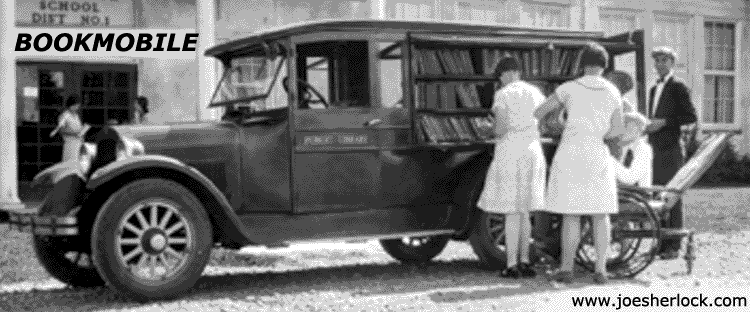
'What A Time It Was!: Leonard Lyons and the Golden Age of New York Nightlife' by Jeffrey Lyons
The author's dad, Leonard Lyons, was a gossip columnist for the New York Post from 1934 to 1974. The book is mostly a collection of material from his columns. It is almost 500 pages long, but chapters are short. This tome is chock full of funny anecdotes and quips about famous people. Many were interviewed at the tony Manhattan night clubs of the era, such as Sardi's, El Morocco, the Stork Club, Toots Shor's, and the Copacabana.
One tale that caught my eye was about FDR. President Roosevelt was too busy during the war years to do his famous fireside chats, so an actor was hired to read the script over the radio while mimicking FDR's voice. The then-obscure voice-over actor selected was the yet-to-be famous Art Carney. Who knew?
Verdict: A palette-cleansing fun read. (posted 6/30/17, permalink)
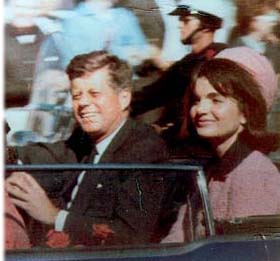 'Target: JFK - The Spy Who Killed Kennedy?' by Robert K. Wilcox 'Target: JFK - The Spy Who Killed Kennedy?' by Robert K. Wilcox
This 356-page book claims that clandestine operative, René A. Dussaq, a man born in Buenos Aires and educated in Geneva and Cuba - an International Man Of Mystery, if you will, was the man who killed John F. Kennedy.
In this slow-moving story, the author uses conjecture, innuendo and hearsay to support his conspiracy theory. The book is both monotonous and simply not credible. How tedious was it? Well, if we had time travel, Kennedy-haters could send this book back to 1963 and present a first-edition copy to JFK. He would have died of boredom. Mission accomplished.
If you're interested in details and discrepancies surrounding the killing of JFK, there have been many good books written over the years; I've probably read twenty or so and would recommend 'High Treason: The Assassination of President John F. Kennedy - What Really Happened' by Groden and Livingstone, published in 1989. It's a good starting point and an eye-opener.
Verdict: Not worth a minute of your time. (posted 6/28/17, permalink)
'Panic On The Pacific: How America Prepared for the West Coast Invasion' by Bill Yenne
Americans everywhere were stunned by the Japanese attack on Pearl Harbor, but those who lived on the West Coast felt extremely vulnerable. In those, pre-freeway days, north-south main roads were sparse and easily attacked. There were few east-west railway connections; a calculated bombing run by the enemy could knock all out of commission. This was a potential disaster in a time when America moved 97% of its freight by rail.
This book is all about the 'invasion' which never happened, although there were genuine submarine, small aircraft and aerial balloon attacks. People were panicked; when retail stores didn't comply quickly enough to the newly-imposed blackout rules, mobs threw rocks at lit windows and neon signs, precipitating a Seattle riot near 4th and Pike Streets. Over 1,000 people were involved and police, fire and civil air raid wardens had difficulty quelling the violence. Auto accidents soared as drivers tried to navigate the dark in vehicles with neither headlights nor taillights.
Hollywood set designers camouflaged West Coast aircraft factories; the book has two impressive photos of the results. Then there were those controversial internment camps for Japanese-Americans because of a feared "fifth column" of enemy collaborators.
The book is quite detailed and lays out the ineptness of military arbitrarily imposing martial law on confused citizens as well as DC's indifference - due to bigger problems and the relative obscurity of the states involved.
This is an interesting story and I learned much although the book bogged down in spots and I found the chapters on 'What If There Had Been An Invasion' irrelevant to the main story.
Verdict: Recommended. (posted 6/22/17, permalink)

'Go Like Hell: Ford, Ferrari, and Their Battle for Speed and Glory at Le Mans' by A. J. Baime
 I clearly remember when the Ford GT40 debuted and the Ford-Ferrari racing battle which ensued. Baime's book provides the colorful backstory. Yes, the book does an outstanding job telling the many stories surrounding Ford's winning years at Le Mans, particularly the big win in 1966. But there's so much more in the book - the clash of two famous automakers by their two ego-driven top execs each of whom had their names on the buildings and the cars, the rise and fall of well-known race drivers of yore, the role of Carroll Shelby in making the Cobra and the GT-40 a success, the story of Lee Iacocca and his rise to fame due to his ability to turn racing performance and image into car buyers. I clearly remember when the Ford GT40 debuted and the Ford-Ferrari racing battle which ensued. Baime's book provides the colorful backstory. Yes, the book does an outstanding job telling the many stories surrounding Ford's winning years at Le Mans, particularly the big win in 1966. But there's so much more in the book - the clash of two famous automakers by their two ego-driven top execs each of whom had their names on the buildings and the cars, the rise and fall of well-known race drivers of yore, the role of Carroll Shelby in making the Cobra and the GT-40 a success, the story of Lee Iacocca and his rise to fame due to his ability to turn racing performance and image into car buyers.
The book took this reader on a wonderful and exciting journey to a risk-filled, bygone era in racing and in American car culture. It revealed much that I didn't know and offered a unique insight about the cars, the men and the times.
Verdict: Must read. (posted 6/14/17, permalink)
'The Smithsonian's History Of America in 101 Objects' by Richard Kurin
Jokingly referred to as America's Attic, the Smithsonian Institute is America's largest repository for the objects that define our nation's heritage. This book offers thumbnail sketches of America's history using 101 examples from the Smithsonian's vast collection. Author Kurin sheds light on famous objects, such as Lincoln's silk top hat, John Bull (America's first steam locomotive), Dorothy's ruby slippers from 'The Wizard of Oz', Julia Child's kitchen, the Discovery space shuttle and John Deere's steel plow which greatly increased farm productivity. Kurin wrote that in 1800, 80% of America's labor force was involved in agriculture. Fifty years later, it was down to 50% due to improved plows, threshers, harvesters and the like.
Kurin is an anthropologist and cultural historian. He serves as Under Secretary for Art, History, and Culture at the Smithsonian. Despite his credentials and expertise, selecting 101 things to represent America is a difficult call. Not everyone will agree with his choices. Or omissions. I would have liked to have seen Howdy Doody with stories about early children's television instead of the Aids quilt. Or instead of Cesar Chavez's union jacket. That said, there's a lot to like in this book. And, for those of you who are also upset at not seeing Mr. Doody, here's a picture I took during our 2004 Smithsonian visit:
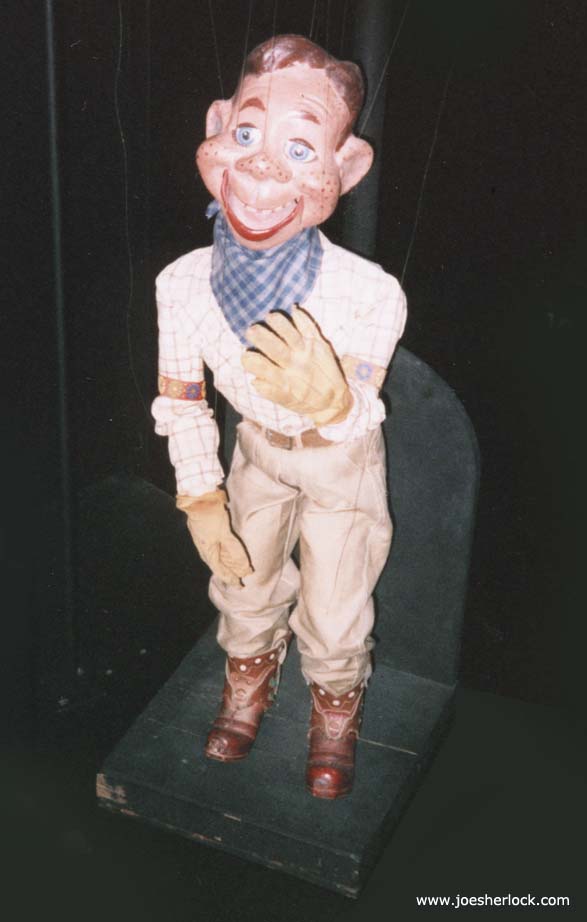
Each item selected has its own chapter and, while things are presented in more-or-less chronological order, you can safely skip any chapters which do not hold your interest. Chapters are short, which makes it easy start/stop, rather than trying to read the 750-plus pages in a eye-straining marathon.
For subjects that interest you, it may seem that the accompanying text oversimplifies history or lacks sufficient detail. I sympathize with the author: When I wrote the texts accompanying my various AutoSketches, I usually limited myself to descriptions of 5-800 words. I occasionally hear from extremely anal-retentive types complaining that I failed to list the trunk capacity for the 1950 Studebaker or provide all the factory exterior color combinations for the 1960 Ford. I suspect that author Kurin's response would be similar to mine - a reply ending with "and the horse you rode in on." Another minor gripe: I found some of the photographs didn't seem to be properly posed or lit.
Verdict: Recommended - mostly enjoyable and informative. (posted 6/8/17, permalink)
'Bobby Rydell: Teen Idol On The Rocks - A Tale Of Second Chances' by Bobby Rydell
While I was reading this autobiography, my wife had several friends over for a gathering. I mentioned the book and the almost universal reaction of these women (ages ranging from 68 to 80) was, "Bobby Who?" I must say that I was shocked. Singer Bobby Rydell had a succession of top ten records in the early '60s, including 'Wild One' (Billboard #2), 'Volare' (#4) and 'Swingin' School' (#5). His 1963 recording, 'Wildwood Days', has become the anthem of the southern New Jersey shore. In all fairness, none of these ladies grew up on the east coast, so maybe that explains it.
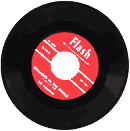 In the 1950s, it was common for regional versions of a song to become hits in various parts of the country. 'Volare' was covered by several artists, including Dean Martin and the McGuire Sisters; people outside Philadelphia may never have been exposed to Rydell's version of the hit song. In the 1950s, it was common for regional versions of a song to become hits in various parts of the country. 'Volare' was covered by several artists, including Dean Martin and the McGuire Sisters; people outside Philadelphia may never have been exposed to Rydell's version of the hit song.
'Butterfly', a 1957 hit for Andy Williams, can't hold a candle to the 1956 Charlie Gracie version released on Philadelphia's Cameo Records label. It was a far bigger hit in the NY-NJ-Philly universe than the lame Williams rendition.
The first time I ever heard the song 'Hot Rod Lincoln' was in 1960 on WIBG - Radio 99 - in Philadelphia. The singer was Johnny Bond. His version was the one that caught on in the Philadelphia area. The proliferation of such regional hits is why many of those reissued compilation albums have songs or artists you don't recognize. Charlie Ryan recorded 'Hot Rod Lincoln' in 1955; it became a hit for him during the 1957-60 period, depending on what area of the country you looked at. I never heard his version until I bought - you guessed it - a car song compilation album in the mid-1960s. Nevertheless, the creator of Hot Rod Lincoln is Charlie Ryan. He fashioned both the real car (a Model A Ford with a Lincoln engine) and the song.
Breaking on the recording scene in 1959, Bobby Rydell was part of Philadelphia's Cameo-Parkway Record's golden years. In addition to Rydell, Cameo-Parkway introduced such pop icons as Chubby Checker, The Dovells, Dee Dee Sharp, The Rays, Charlie Gracie, The Tymes and The Orlons. Because the record label had a close relationship with Dick Clark, host of the national television show, 'American Bandstand', Cameo's artists readily gained national exposure and, often, almost instant fame. Bobby Rydell's early career path is Exhibit A of this career building method.
Unlike his contemporary, Fabian - who had little discernible talent, seventeen year-old Rydell had a versatile singing voice, acting chops and the ability to craft a credible stage show that boosted his career into movie roles (singing and dancing with co-star Ann-Margret in 'Bye Bye Birdie'), appearances at the Copacabana and, later, Las Vegas. As his career waned, he found steady work in concert performances - often with fellow Philadelphians, Frankie Avalon and Fabian - and on cruise ships as well as in casinos.
This easy-to-read, 266-page book has an authentic feel to it. It's as if readers are sitting at a table with this pop/rock raconteur, listening to his stories. Rydell presents interesting tales of pre-Beatle pop stardom. And they're honest ones, too. Bobby R. doesn't hold back, sharing the high points and low points of his life. He openly discusses his drinking problems and the second chance given to him when he received a double organ transplant to replace his shot liver and kidneys in 2012.
Verdict: Recommended. (posted 5/31/17, permalink)
'Last Girl Before Freeway: The Life, Loves, Losses, and Liberation of Joan Rivers' by Leslie Bennetts
Joan Rivers lived a tumultuous and adventuresome life. The legendary comedienne, was a tireless workaholic even at age 80. Her career mixed peaks of success with rocky times and this juicy 400-plus page book seems to reveal all you'd want to know. And, sometimes stuff you didn't want to know.
Although the book is chock full of material from other sources, including Rivers' own books, it does a good job weaving together a readable narrative, with much behind-the-scenes information. Joan was generous but her barbs - comedic and otherwise - could be hurtful. She was often unhappy and was always worried about her daughter Melissa's lack of talent.
Verdict: I enjoyed the book. If you liked Joan Rivers, you'll probably enjoy it, too. (posted 5/25/17, permalink)
'Natalie Wood: Reflections on a Legendary Life' by Manoah Bowman
This oversized, coffee table-style, 320-page picture book includes commentaries by husband Robert Wagner, daughter Natasha Gregson Wagner, Courtney Wagner and others. It is not really a biography, rather a series of written sketches about specific periods in her life. Nevertheless, I learned some new things about Natalie Wood and enjoyed the stories and photos. It's apparent that she is remembered by her children and her husband with fondness and much love.
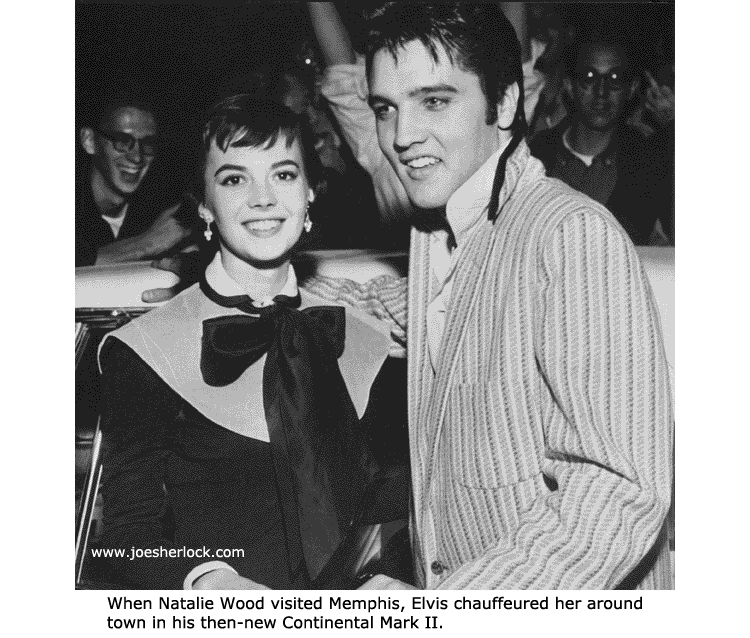
Ms. Wood was one of the few child actors to make the transition to adult stardom. She began acting in movies at the age of four and, at age eight, was given a co-starring role in the iconic 1947 Christmas film 'Miracle on 34th Street'. She continued with her movie career and gained additional movie fame for her role in 'Rebel Without a Cause'. Then she played the starring role of Maria in the 1961 film, 'West Side Story.' She is part of a by-gone era of film-making and her death at age 43, left her as forever young in the minds of fans.
Verdict: Recommended, especially if you are a Natalie Wood fan. (posted 5/17/17, permalink)
'The Undoing Project: A Friendship That Changed Our Minds' by Michael Lewis
In 2014, I read and reviewed 'Flash Boys: A Wall Street Revolt' by this author. I found it informative, noting that "the author keeps things interesting, even for the lay person."
Not so for 'The Undoing Project'. The cover blurb states, "Forty years ago, Israeli psychologists Daniel Kahneman and Amos Tversky wrote a series of breathtakingly original studies undoing our assumptions about the decision-making process. Their papers showed the ways in which the human mind erred, systematically, when forced to make judgments in uncertain situations." Really? Reading the book, I found their approaches to decision-making tentative and random.
Daniel Kahneman eventually settled in at Princeton University and was awarded a Nobel Prize. It is interesting to me that, in the 1960s, two PhDs from Princeton, Charles H. Kepner and Benjamin B. Tregoe, developed techniques for decision-making and problem-solving which were widely adopted by industry. "In 1958, based on extensive field research, Dr. Tregoe and his partner, Dr. Charles H. Kepner, formulated a systematic thinking process for problem solving and decision making. At the time, these activities were typically considered to be a function of instinct and 'gut feel'." Today over 400 of the 1,000 largest companies worldwide use Kepner-Tregoe management methods. I was taught the Kepner-Tregoe method when I was 30 or so and have used it to great benefit throughout my life.
Back to 'Undoing': I found it both uninteresting and boring. The book is an epic fail as an explanation of Kahneman and Tversky thesis and as a biography of these two quirky and inscrutable Israelis.
Verdict: A waste of time and paper. Skip it. (posted 5/11/17, permalink)
'Progress: Ten Reasons to Look Forward to the Future' by Johan Nordberg
We are awash in a turbulent sea of bad news. You can't get ratings, sales or profits if your news organization's daily message is, "All is well. Good day." The mantra in the news biz is: "If it bleeds, it leads."
Yet, there is much to celebrate in this 21st Century: Food is plentiful; no longer is the Third World full of starving children. Every decade yields real progress in the availability of clean water and good sanitation practices. People live longer and childhood deaths have decreased dramatically. Literacy is becoming the norm. By every measure, poverty has fallen dramatically. War, violence and their consequences have diminished. The environment is improving worldwide. There are fewer people whose lives are controlled by dictators and tyrants. Equality - social, racial, religious and gender - is becoming the norm.
Author Nordberg is a senior fellow at the Cato Institute. His book offers affirmative, documented proof that Things Are Getting Better over the long haul. It is a respite from the waves of Woe-Is-Us, Ain't-It-Awful negativity which seem to surround us. Plus, it's an easy read.
Verdict: Highly recommended. Read this book and get happy. (posted 5/3/17, permalink)
'JFK And The Unspeakable: Why He Died and Why It Matters' by James W. Douglass
 This is a dreadful book - a 565-page bore-fest. The author would have readers believe that John F. Kennedy was killed by a Grand Conspiracy carried out by military and intelligence agencies after JFK became a peace-loving dove. And a better Catholic. (Ask Marilyn Monroe, Angie Dickinson, Judith Campbell Exner as well as various White House interns and staffers about that 'better Catholic' stuff.) This is a dreadful book - a 565-page bore-fest. The author would have readers believe that John F. Kennedy was killed by a Grand Conspiracy carried out by military and intelligence agencies after JFK became a peace-loving dove. And a better Catholic. (Ask Marilyn Monroe, Angie Dickinson, Judith Campbell Exner as well as various White House interns and staffers about that 'better Catholic' stuff.)
The author is a peace activist and amateur Catholic theologian. He begins the book with a connect-the-dots rant about how all assassinations of peace-lovers are connected. JKF, Malcolm X, RFK, MLK ... hey, how did Malcolm X get in there? Why not include George Wallace and Patrice Lumumba, too? How about John Lennon - he was for peace as well? And let's not forget Gandhi. Maybe he started the whole thing.
Mr. Douglass also believes that if the U.S. got rid of our missiles and nuclear weapons, the rest of the world would follow suit and peace would result. Yeah, right. Tell that to Kim Jong Un. Or Iran.
Various people have suggested that John Kennedy's contract-killing was underwritten by Castro, some disaffected Cubans in the U.S., the Mafia, Frank Sinatra, the CIA and/or TAB diet cola, which debuted in 1963. (I may have made that last one up.)
Look, it's OK to doubt the Warren Report. In 1963, the government (with the press in the cheering section) wrapped up the JFK's murder in a tidy little package as quickly as a 'Perry Mason' episode. They "solved" the murder before JFK was even in the ground (and made sure that the lone official suspect was conveniently and quickly disposed of by a Mafia thug friendly to the Dallas police). Many of us never believed that a chinless little wimp with a cheap rifle could pull off such a thing by himself.
If you're interested in details and discrepancies surrounding the killing of JFK, there have been many good books written over the years; I've probably read twenty or so and would recommend 'High Treason: The Assassination of President John F. Kennedy - What Really Happened' by Groden and Livingstone, published in 1989. It's a good starting point and an eye-opener. On the other hand, Douglass' book is not worth a minute of your time.
Verdict: Unspeakable is Unreadable. (posted 4/27/17, permalink)
'Flags Of Our Fathers' by James Bradley
Son of one of the soldiers in the iconic Iwo Jima flag-raising photo, James Bradley relates the story of the battle, the flag raising and the aftermath. It makes for a fascinating and powerful tale as Bradley begins a quest for the real story of Iwo Jima and the many Marines who were killed or permanently damaged by the horror of the fight.
There are many extraordinary tales about each individual flag raiser and the affect this event and the war in general would have on their lives. The poignancy and the heroics found within the book's pages are deeply moving.
Bradley discovered his dad's important role only after his father's death. In life, he wouldn't talk about the war and displayed no copy of the famous photograph in his home, telling his son, "The real heroes of Iwo Jima were the guys who didn't come back."
Verdict: Highly recommended. This unforgettable, well-written book is one of the best ones available about the war in the Pacific Theater. (posted 4/19/17, permalink)
'The Attention Merchants: The Epic Scramble to Get Inside Our Heads' by Tim Wu
This book is full of interesting little stories about the last 180 years or so of advertising and its variants. Wu's overall meme runs off the rails and into the weeds occasionally, such as when he delves into the propaganda of the Third Reich and Hitler's speeches. Some of the stories come off as superficial representations of a particular era.
The book ends with the state of online persuasion and the use of click-bait ads.
Verdict: An enjoyable, breezy collection of stories but don't expect deep analysis here. (posted 4/13/17, permalink)
'In Trump We Trust: E Pluribus Awesome!' by Ann Coulter
 This book was published in late August 2016, when Ann Coulter was on a short list of Trump Believers. Had she been wrong and had Trump not won the election, this book would have failed to sell even in remainder bins. But, to the amazement of the know-it-all political consultants, smug analysts, the chattering classes and the unctuous talking heads, Donald Trump won the presidency. Ann was an early Trump supporter along with a few others: Jeff Sessions, the Newtster, Mark Steyn, Jan Brewer. Mike Huckabee. Sean Hannity. and Lou Dobbs. This book was published in late August 2016, when Ann Coulter was on a short list of Trump Believers. Had she been wrong and had Trump not won the election, this book would have failed to sell even in remainder bins. But, to the amazement of the know-it-all political consultants, smug analysts, the chattering classes and the unctuous talking heads, Donald Trump won the presidency. Ann was an early Trump supporter along with a few others: Jeff Sessions, the Newtster, Mark Steyn, Jan Brewer. Mike Huckabee. Sean Hannity. and Lou Dobbs.
Ann noted that Trump won the nomination "by spending no money, hiring no pollsters, running virtually no TV ads, and just saying what he truly believed no matter how many times people told him he couldn't say that." Mirabile dictu! He vanquished 16 Republican opponents who spent a combined $701,293,230. 'Jeb!' Bush alone wasted over $130 million on his presidential quest.
Anti-Trumpers such as George Will, Ben Stein, Bill Kristol, Hugh Hewitt, Mitt Romney, Pope Francis, Jonah Goldberg, Charles Krauthammer, Karl Rove, the entire National Review staff (the magazine devoted a full issue to 'The Case Against Trump') and most of the generally spineless Republican Congress dissed The Donald as the muffin stump of their cloistered political world. But real people liked his "can-do" attitude. Donald Trump led a political revolution that was long overdue.
I particularly enjoyed Ms. Coulter's acerbic wit. I found the book a pleasurable pre-election walk down Memory Lane and liked her inclusion of all the negative quotes from experts, including the date of each quote. Ann hoisted each commenter by his/her own petard.
As I write this, it is too soon to know how the Trump presidency will turn out. He's certainly a busy president and is trying to fulfill his campaign promises, although he doesn't seem to get much help from Congress.
Verdict: Recommended - an easy, fast and fun read. (posted 4/4/17, permalink)
'JFK and the Reagan Revolution: A Secret History of American Prosperity' by Larry Kudlow and Brian Domitrovic
This is an easy-to-read, information-packed 256-page book. Economist Larry Kudlow and historian Brian Domitrovic show the connections between the John F. Kennedy proposed tax cuts (enacted shortly after his assassination) and Ronald Reagan's tax cuts and how both improved the nation's economy, demonstrating the validity of supply-side economics. The authors also discuss how these programs were mangled by various presidents, starting with Nixon.
I do have one minor quibble: On page 154, the authors state, "Automobile purchases went up by 60% in the 1960s, having increased barely at all in the 1950s." I think that the authors are painting auto prosperity with a very broad brush. The problem is that new car auto sales vary greatly on a year-to-year basis, depending on a household's micro-economy, styling appeal, keeping up with neighbors, deals offered by sellers, etc. It is true that sales in 1950 were at the same level as 1960. But it is also true that sales of U.S. produced cars were at about the same level in 1970 as they were in 1960. In the 49-year period from 1967 to 2016, monthly sales have fluctuated wildly between an annualized rate of eight million light vehicles per year and 22 million/year. But the annual growth of light vehicles in the U.S. has increased by less than 1%/year during those 49 years.
That said, I found this book to be well-documented. The economic history discussed matched what I remember and experienced during my lifetime. Kennedy was a pragmatist - he started as a Keynesian disciple but, when he found it didn't work, embraced Robert Mundell's fiscal/monetary policy mix, now known as supply-side economics. Fellow-pragmatist Ronald Reagan left an economic legacy - the Reagan Revolution - which, sadly, unravelled under the stewardship of his successor, George H.W. "read my lips; no new taxes" Bush.
Verdict: Highly recommended. I think you'll learn a lot. I did. (posted 3/30/17, permalink)
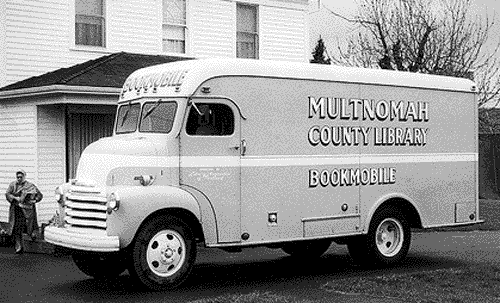
'The General vs. the President: MacArthur and Truman at the Brink of Nuclear War' by H.W. Brands
On the 1980s television series, 'Hart To Hart', the promo tagline was "And when they met, it was murder." And so it was when General Douglas MacArthur met President Harry Truman. MacArthur was the ultimate egotist and fabulist. The General engineered stunning triumphs, which he made sure were very-well publicized, as well as humiliating defeats, which he tried to gloss over or conceal. Truman was hard-nosed, hard-headed and his thin skin didn't like MacArthur's seeming disrespect.
In this 448-page book, the author tries to present a balanced view of Truman, an unpopular president who squeaked out a victory in the 1948 elections, and MacArthur, a popular figure who helped create a modern, non-militarized postwar Japan, but was caught flatfooted during the early days of the Korean War. Pages are full of vivid, detailed accounts of the many events which culminated in MacArthur's firing by Truman.
In the end, both men lost. Truman left office as an unloved president, although most historians have elevated his reputation over time. MacArthur never got the presidency he sought and his fame, like many old soldiers themselves, simply faded away.
Verdict: A good read which provides lots of fascinating details on this period in American history. Recommended. (posted 3/22/17, permalink)
'Killing The Rising Sun: How America Vanquished World War II Japan' by Bill O'Reilly and Martin Dugard
This book is a collection of tales and gossip about the final year of World War II in the Pacific Theater. While the book is a fairly easy read and entertaining, I am suspicious about the veracity of certain items in this book. This is not surprising, based on the errors found in 'Killing Patton' and 'Killing Kennedy'.
The 336-page tome begins with the stench of falsehood, that Franklin Delano Roosevelt saved America during the Great Depression. In 'The Forgotten Man', Amity Shlaes makes a substantial argument that private business success has been the key to U.S. economic expansion and that each step of the New Deal was a further blow to business confidence.
In 'Killing The Rising Sun', the authors claim that FDR smoked 20 cigarettes per day. Other books, describe Roosevelt as a "heavy smoker," consuming multiple packs (20 cigs/pack) each day. Photos often show him with a cigarette and trademark holder in his mouth or in his hand. The authors also pointed out that Roosevelt was ill during the various allied forces conferences. As pointed out in 'Stalin's Secret Agents', Franklin Roosevelt was a truly sick man in 1943 and gave away too much to Russia, egged-on by the Communists who had infiltrated the Roosevelt administration.
O'Reilly's and Duggar's book focuses on the final year or so of combat in the Pacific Theater and the use of the atomic bomb against Japan. The book is a bit superficial, seemingly written for a history novice. Perhaps that's the target audience. In any case, there are many much better books out there. Not that my opinion means much, because the 'Killing' series of books are now a franchise. They sell well not on their own merits but because Bill O'Reilly mega-hypes them on his nightly 'Factor' show. Even as you are reading this sentence, ol' Bill is on his knees, praying for another famous obituary, so he can write something like 'Killing Larry King'. Or 'Killing Carol Channing'. Bet on it.
Oh, wait ... here's a preview of Bill's next book:
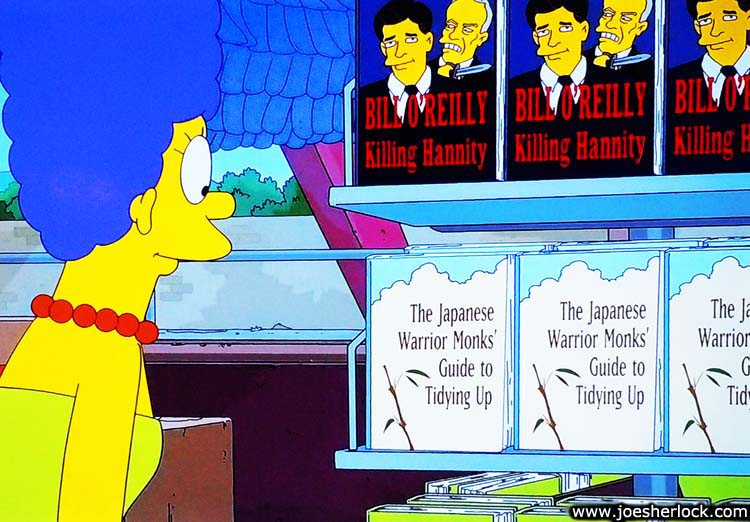
Verdict: I guess that 'Killing The Rising Sun' is an OK starter book for those who know little or nothing about World War II. (posted 3/16/17, permalink)
'Speaking American: How Y'all, Youse, and You Guys Talk: A Visual Guide' by John Katz
I mostly review serious nonfiction books but, after awhile, it's nice to have a light-hearted palette cleanser. Speaking American is a perfect example.
John Katz's offering is a delightful exploration of American dialects and regional word usages. The information is presented graphically with segments overlaid atop maps of America. That makes it easy to separate the pop and soda regions of the U.S. My first memorable introduction to regional dialects was when we arrived in Oregon from the metro-Philadelphia area and ordered ice cream. When asked about preferred toppings, I said, "Jimmies." The server had no idea what I was talking about. I pointed to the jar of jimmies. "Oh, you mean sprinkles," she said.
Where does scratch paper become scrap paper? Where are garage sales called yard sales? Or rummage sales? Or tag sales? Where do you 'cut the grass' rather than 'mow the lawn'? This book will provide answers.
I found this to be an enjoyable, easy read. One drawback is that the book never addresses the Thanksgiving filling/dressing/stuffing conundrum.
Verdict: Recommended ... just for fun. (posted 3/8/17, permalink)
'Good Vibrations: My Life as a Beach Boy' by Mike Love and James S. Hirsch
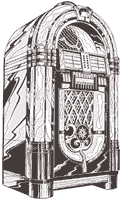 In this New York Times best-selling autobiography, perennial Beach Boy Mike Love relates five-plus decades of his life as one of the founding members of the iconic group - arguably the most popular American musical group in history. Love sings lead on many of the Beach Boys most memorable songs; he wrote or co-wrote many of them. In this New York Times best-selling autobiography, perennial Beach Boy Mike Love relates five-plus decades of his life as one of the founding members of the iconic group - arguably the most popular American musical group in history. Love sings lead on many of the Beach Boys most memorable songs; he wrote or co-wrote many of them.
To many in my age group, the Beach Boys represent an era - those magical few years of the early '60s before JFK was shot - when California was viewed, by those who had never seen it, as the next best thing to heaven. This view was personified in the 1973 film, 'American Graffiti' which was set in 1962 California.
In the 1950s and '60s, the Golden State was perceived as America's dream, especially Southern California - a land of warmth and sunshine, blue ocean and beaches not far from the city. Then there were the palm trees, modern freeways, , the blue Pacific Ocean, the hot rods, George Barris’ wild custom cars, Ed 'Big Daddy' Roth, interesting and novel (for me) architecture and lithe, tanned people dressed in sharp clothes who drove gleaming, desirable autos. Just watch old '50s television shows set in the Golden State - such as '77 Sunset Strip'. Kookie, Kookie, lend me your comb, indeed.
This book is Mike Love's story and he acknowledges that "for those who worship at the altar of Brian Wilson, I will always be the Antichrist." Brian Wilson is often portrayed as a tortured genius, abused by his domineering father who also mismanaged the Beach Boys. But Brian is no saint and went from neurotic to a drug-addled nutcase. Most of the group had issues of one sort or another - and most of those issues were fueled by alcohol and/or drugs. The group's members allowed themselves to be mismanaged. Parts of the story are ugly and the problems make for slow going at times but, overall, this was a mostly-enjoyable and informative read.
The upside: it's amazing that the group is still around and touring - no Beach Boys tribute band required.
Verdict: Recommended. (posted 3/2/17, permalink)
'The Intimidation Game: How the Left Is Silencing Free Speech' by Kimberly Strassel
Kim Strassel is a political columnist at The Wall Street Journal and is one of the pundits often seen on various cable news shows, especially Fox News Sunday. Her book provides a frightening look at how the political left uses various underhanded tactics to bully conservative Americans out of their free speech rights.
Especially disturbing is the Obama administration's politicization a number of federal agencies including the FEC, FCC, SEC and, most especially, the Internal Revenue service. After reading the book, my first question was, "Why is Lois Lerner not in jail?" The content of the book was chilling and the documented government actions were positively Orwellian.
I read this book just before the November '16 election and saw Ms. Strassel's assertions brought to light, thanks to the many Wikileaks releases and the Project Veritas videos.
Although it is less than 400 pages, this is a dense book because of the detail provided and is not a breezy read. But it is definitely worth your time, because the Left is still around and trying desperately to abolish all things non-liberal.
Verdict: Recommended. (posted 2/22/17, permalink)
'Destiny Of The Republic: A Tale of Madness, Medicine and the Murder of a President' by Candice Millard
This is the latest form of biography: Biography Lite, where James A. Garfield's early years are summarized in the first 100 pages or so. An admirable man, he rose from poverty to become a scholar, Civil War hero, congressman and president.
The majority of the book focuses on his assassination; by page 132 of the 300+ page book, the president has already been wounded by bullets. Garfield was shot less than four months after he was sworn in as president; he lingered - his health steadily declining - until he died less than three months later. During his last days, he asked to moved from sweltering Washington, DC to the breezy New Jersey shore, near Long Branch, where the salt air might be beneficial. The president traveled in a specially-cushioned railway car. A spur line to the seaside mansion was built in a night by volunteers.
Garfield was beloved by the populace. The country grieved for his loss almost as much as it had done for Lincoln. More than 100,000 citizens passed by the coffin as his body lay in state in Washington. In Cleveland, more than 150,000 - a number equal to the entire population of that city - paid their respects to the fallen president. A grand multi-story mausoleum with an observation deck was constructed to house his remains and those of his family. The closed caskets of Garfield and his wife, Lucretia, are still displayed in the lower crypt.
When Garfield's assassin was captured in the same train station where he shot Garfield, across the street from the station a "group of enraged black men, joined by a growing chorus, began shouting, 'Lynch him!' and the lethal momentum of the mob became all but unstoppable." Only heavy police presence prevented a lynching. One newspaper suggested that the assassin be "tried in the court of Judge Lynch." During his short presidency, Garfield had appointed African-Americans to his Cabinet and was generally a strong proponent of civil rights.
Justice was swift in those days. Charles J. Guiteau, a deranged, self-important, petty criminal who was angry at Garfield because Guiteau failed to secure an ambassadorship, was indicted within two weeks after Garfield's death. He was found guilty in January of the following year and was executed by hanging less than six months later.
The book weaves together the stories of Garfield, Guiteau, the president's primary surgeon, Dr. Willard Bliss, and Alexander Graham Bell, who tested his bullet-finding invention on an ailing Garfield.
There are books that develop several characters and build the suspense until they meet. It doesn't work so well here. Dr. Bliss was a controversial figure, who was late to the game in adapting the antiseptic practices developed by British surgeon, Dr. Joseph Lister in 1861. Twenty years later, many U.S. surgeons failed to even wash their hands before surgery. Author Millard wrote, "Doctors who lived in the country, away from the soot and grime of the industrialized cities, argued that their air was so pure that they did not need antisepsis. They preferred, moreover, to rely on their own methods of treatment, which not infrequently involved applying a hot poultice of cow manure to an open wound." An autopsy on Garfield implicated Bliss, due to the massive infections found throughout the president's body. People quipped sardonically, "Ignorance is Bliss." One doctor wrote that Bliss had "done more to cast distrust upon American surgery than any time heretofore known to our medical history." Bliss was also arrogant and kept other, possibly more competent doctors away from Garfield.
Alexander Bell's inclusion in this book, while interesting and informative in itself, does little to move the narrative along. This makes the book dry and uninteresting in spots. Garfield's funeral and the post-Garfield treatment of his presidency are given short shrift. Although I did learn that Lucretia established the first Presidential Library and its vault still contains the funeral wreath sent by Queen Victoria. But the author never reveals who was running the White House during the three months when Garfield was incapacitated.
Verdict: Worthwhile read, with reservations. (posted 2/16/17, permalink)
'The Fractured Republic: Renewing America's Social Contract in the Age of Individualism' by Yuval Levin
I wish that I could say something positive about this book. Sadly, it is boring and pointless. The subtitle suggests that solutions will be offered in the book, but I found no how-tos or bullet lists. The focus is mostly on Woe Is Me, Things Ain't What They Used To Be. Well, duh!
Other books offer solutions to America's problems, notably 'Exceptional: Why the World Needs a Powerful America' by Dick and Liz Cheney, 'The Way Forward' by Paul Ryan and 'One Nation: What We Can All Do to Save America's Future' by Ben Carson, MD.
Verdict: Not worth your time. (posted 2/8/17, permalink)

'In Such Good Company: Eleven Years of Laughter, Mayhem, and Fun in the Sandbox' by Carol Burnett
In this book, Carol Burnett reveals the backstory of her successful, Emmy-winning (25 of 'em) weekly variety show which ran from 1967 to 1978. 'The Carol Burnett Show' was one of the last comedy/variety shows on television, following in the footsteps of iconic 1950s shows from Sid Caesar, Milton Bearle, Gary Moore and others.
If you are a fan of the talented Ms. Burnett and/or were a regular viewer of her show, you'll find this book to be a pleasant trip down memory lane and an easy read, as well.
Verdict: Recommended. (posted 2/2/17, permalink)
'Who Needs The Fed?: What Taylor Swift, Uber, and Robots Tell Us About Money, Credit, and Why We Should Abolish America's Central Bank' by John Tamny
In 2015, I reviewed Tamny's previous book, 'Popular Economics'. I recommended it with two important reservations.
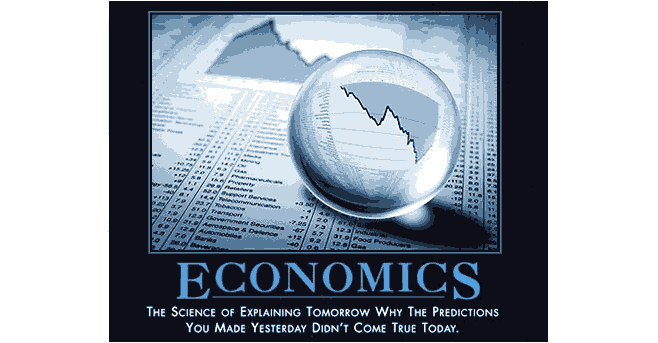
Tamny's latest book is far less impressive and I have numerous issues with the author. I agree with him that the big banks shouldn't have been bailed out. Too Big To Fail is a bad precedent. I also believe that the auto industry bailouts shouldn't have happened either.
The author posited that the financial crisis and resultant great recession was not due to the mortgage meltdown but rather the price of gold. Huh? Said meltdown was caused by unprecedented and irrational lending practices by mortgage lenders, encouraged by the government. This brought about a grave financial crisis, in my view. For details, see my review of 'Hidden In Plain Sight: What Really Caused the World's Worst Financial Crisis and Why It Could Happen Again'.
Peter Thiel, whose book 'Zero To One' I enjoyed and recommended, is frequently mentioned positively in this tome. But 'frequently' is part of the problem because this book is chock full of repetition. It's a thin book - 180 pages plus notes - and could have easily been cut by half. He failed to provide a coherent argument for eliminating the Fed, the steps he'd recommend to get rid of it and failed to get specific about what would replace it.
Verdict: Don't bother. Following on the success of his last book, I don't think Tamny put much effort into this one. (posted 1/25/17, permalink)
'The Scandal Of Money: Why Wall Street Recovers but the Economy Never Does' by George Gilder
Mr. Gilder authored 'Wealth and Poverty'. First published in 1981, his book spread the gospel of supply-side economics to a broad audience. I enjoyed reading it.
I found Gilder's latest 224-page book to be very difficult to understand. Maybe it's me. George Gilder has been praised by many as brilliant. But now, Gilder wants to unleash economic growth by returning to the gold standard, using some variation of Bitcoin.
He correctly identifies the problem: "a famine of growth during the Obama years." But then he goes off the rails, shaking his fist against a dead Richard Nixon for taking America off the gold standard in 1971. He mourns the good ol' days of Bretton Woods. He no longer likes Milton Friedman. He hates index funds, claiming that they cheat investors somehow. Huh?
I would remind Mr. Gilder that Bethany McLean of Fortune magazine wrote, "Building a portfolio around index funds isn't really settling for the average. It's just refusing to believe in magic." The Vanguard Index 500 Fund - now 40 years old - mirrors the S&P 500 Index. It has, over almost any 10 year period, outperformed more than 90% of all other mutual funds.
I would also point out that gold is usually a bad investment. In January, 1980, the market price of gold was $875 per ounce. At the time, the Dow-Jones Industrial Average was in the range of 875. Today, gold is $1,300 or so, while the Dow is over 18,000. So, would you rather have invested your $875 in gold and get a gain of less than 50% in 36+ years? Or would you rather have invested your money in a basket of blue chip stocks for a gain of over 1,900%?
Verdict: Disappointing and incomprehensible. Skip it. (posted 1/19/17, permalink)
'1932 - The Rise of FDR & Hitler - Two Tales of Politics, Betrayal, and Unlikely Destiny' by David Pietrusza
Anything author Pietrusza writes about politics goes on my must-read list. I have previously written favorable reviews about '1920: The Year of the Six Presidents', '1948: Harry Truman's Improbable Victory and the Year that Transformed America' and '1960 - LBJ vs. JFK vs. Nixon: The Epic Campaign That Forged Three Presidencies'.
'1932' illustrates the struggles of two iconic leaders as each battled to rise to the top of their respective nations. Conventional wisdom says that Franklin D. Roosevelt had an easy victory over his reviled opponent, Herbert Hoover. He did but he had a far more difficult time securing the Democratic presidential nomination. Adolf Hitler's path to leadership was even more treacherous and almost didn't happen.
For those readers who are car aficionados, I would point out that 1932 was the first year of the Ford V8 engine.

While the 1932 Ford wasn't the first V8 produced, it was still such a new idea that people worried that gravitational forces might cause the bottoms of the slanted cylinder walls to wear out. They were wrong and every male in America lusted after the distinctive rumble which only a V8 can produce. How could all those early hot rods have been developed without a flathead Ford V8 to move them?
Here are some tidbits from the book:
• From the beginning of FDR's battle with polio, there was a conspiracy to spin the facts. Big Jim Farley, chairman of the New York Democratic Party and FDR's campaign manager (1928-32), said, "His lameness, which is steadily getting better, has no more effect on his general condition than if he had a glass eye or was prematurely bald." As I was reading this book, the Hillary Clinton health crisis erupted and I was reminded of the similar deceptions by spinmeisters to keep the press and the public in the dark.
• Hitler had a Catholic upbringing and was once an altar boy.
• Not everyone liked Roosevelt. Legendary Democratic Boston ward boss Martin Lomasney lambasted FDR as "an aristocrat, a demagogue, and a double-crosser who has capitalized his invalidism and was using it to generate sympathy."
• In the 1932 election, there was bad blood between Roosevelt supporters and those for Al Smith. There were many meetings and negotiations to 'patch things up' so that the party could present a united front. I suppose things never change; the details reminded me of the Hillary-Bernie situation and the Trump-Cruz drama.
• Other 1932 American races were interesting, too. In the North Carolina senate race, Democratic challenger Robert Rice Reynolds, a thrice-married, blond county attorney, positioned himself as one of the "po' folks" by campaigning "in threadbare suits and worn shoes, often faking car breakdowns before arriving in small towns. To equally ragged audiences, Reynolds would reveal that his wealthy rival Morrison lived in Washington's opulent Mayflower Motel. Brandishing a Mayflower menu, he would read prices from it. "What do you think he eats?" Reynolds thundered. ... My friends, think of it, Senator Morrison eats caviar!""
• By September 1932, U.S. unemployment reached 27.9%.
• In 1932, Columbia Pictures released the documentary film, 'Mussolini Speaks', "a Lowell Thomas-narrated paean" to the Italian leader, praising him as "a man of the people whose deeds will ever be an inspiration to mankind." Produced for $100,000, it grossed a phenomenal million dollars.
This book is more than mere history; Pietrusza has brought 1932 to life and created a compelling page turner. I highly recommend it. (posted 1/11/17, permalink)
'MacArthur At War: World War II in the Pacific' by Walter R. Borneman
After a brief look at Douglas MacArthur's ancestry, childhood, family and World War I service, this 600-plus page book spends its time on his days in the Pacific Theater during World War II.
The General engineered stunning triumphs, which he made sure were very-well publicized, as well as humiliating defeats, which he tried to gloss over or conceal. MacArthur was the ultimate egotist and fabulist. One-time assistant Dwight Eisenhower once remarked, "I studied dramatics under MacArthur for seven years." The author presents a balanced picture as possible, neither attempting to hide MacArthur's flaws and failings nor overly glorifying his successes.
The book is very detailed - too detailed for me - and I soon found it boring. Nevertheless, for serious historians, this is probably an excellent choice of reading material.
Verdict: Recommended only if you're a determined WWII or MacArthur buff. (posted 1/5/17, permalink)
More book reviews are posted here.
Other Pages Of Interest
copyright 2017 - Joseph M. Sherlock - All applicable rights reserved
Disclaimer
The facts presented in this blog are based on my best guesses and my substantially faulty geezer memory. The opinions expressed herein are strictly those of the author and are protected by the U.S. Constitution. Probably.
Spelling, punctuation and syntax errors are cheerfully repaired when I find them; grudgingly fixed when you do.
If I have slandered any brands of automobiles, either expressly or inadvertently, they're most likely crap cars and deserve it. Automobile manufacturers should be aware that they always have the option of trying to change my mind by providing me with vehicles to test drive.
If I have slandered any people or corporations in this blog, either expressly or inadvertently, they should buy me strong drinks (and an expensive meal) and try to prove to me that they're not the jerks I've portrayed them to be. If you're buying, I'm willing to listen.
Don't be shy - try a bribe. It might help.
|
|